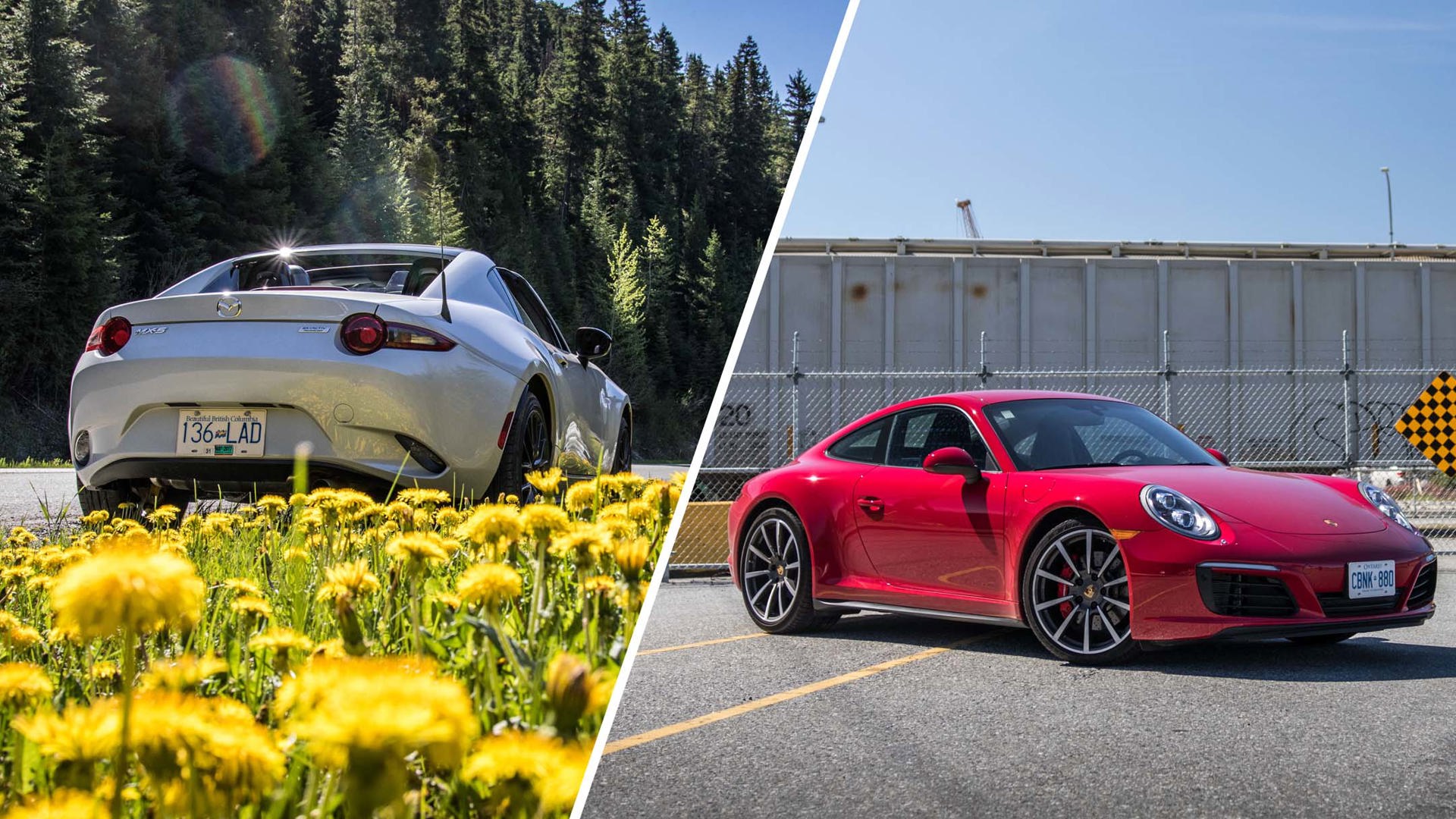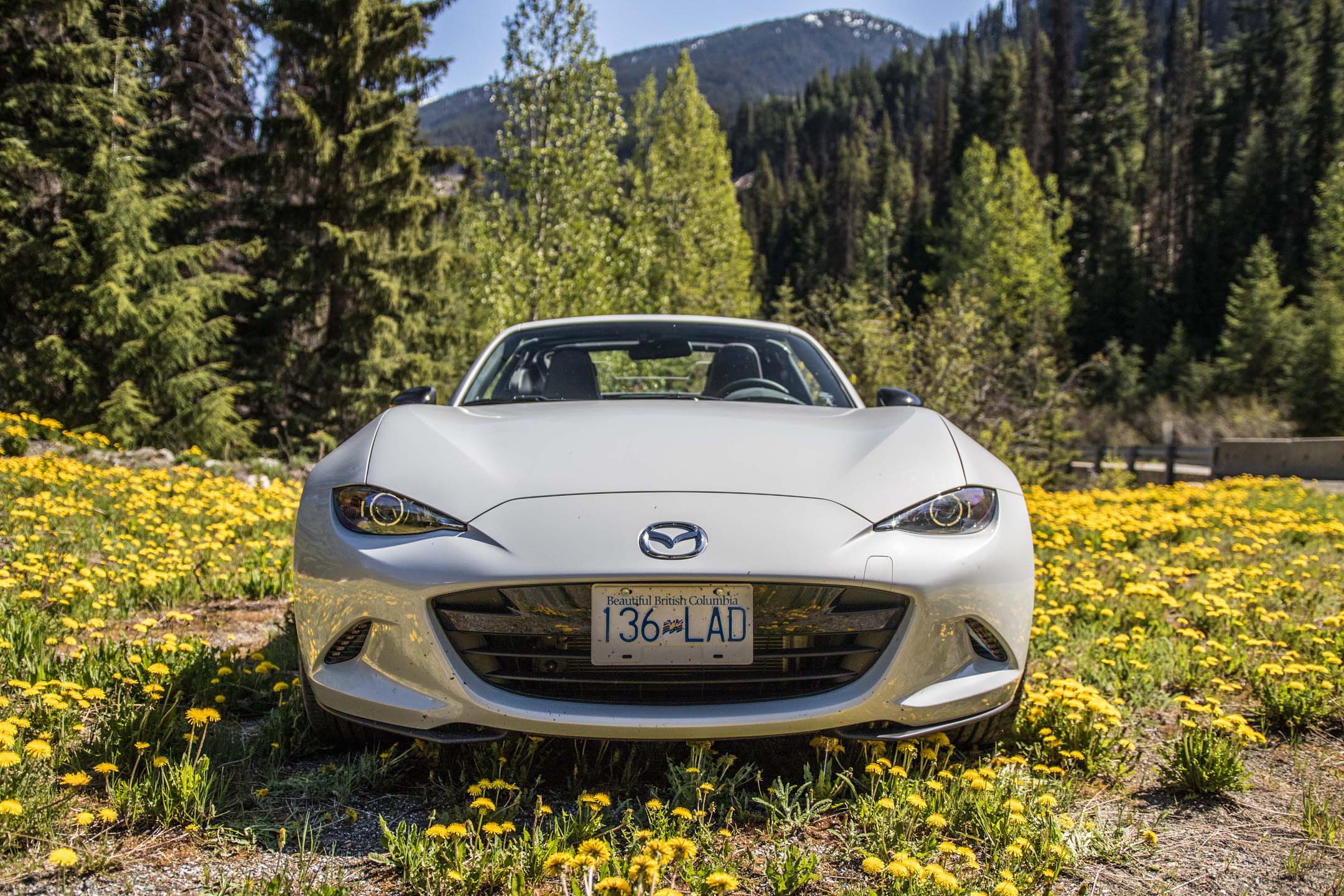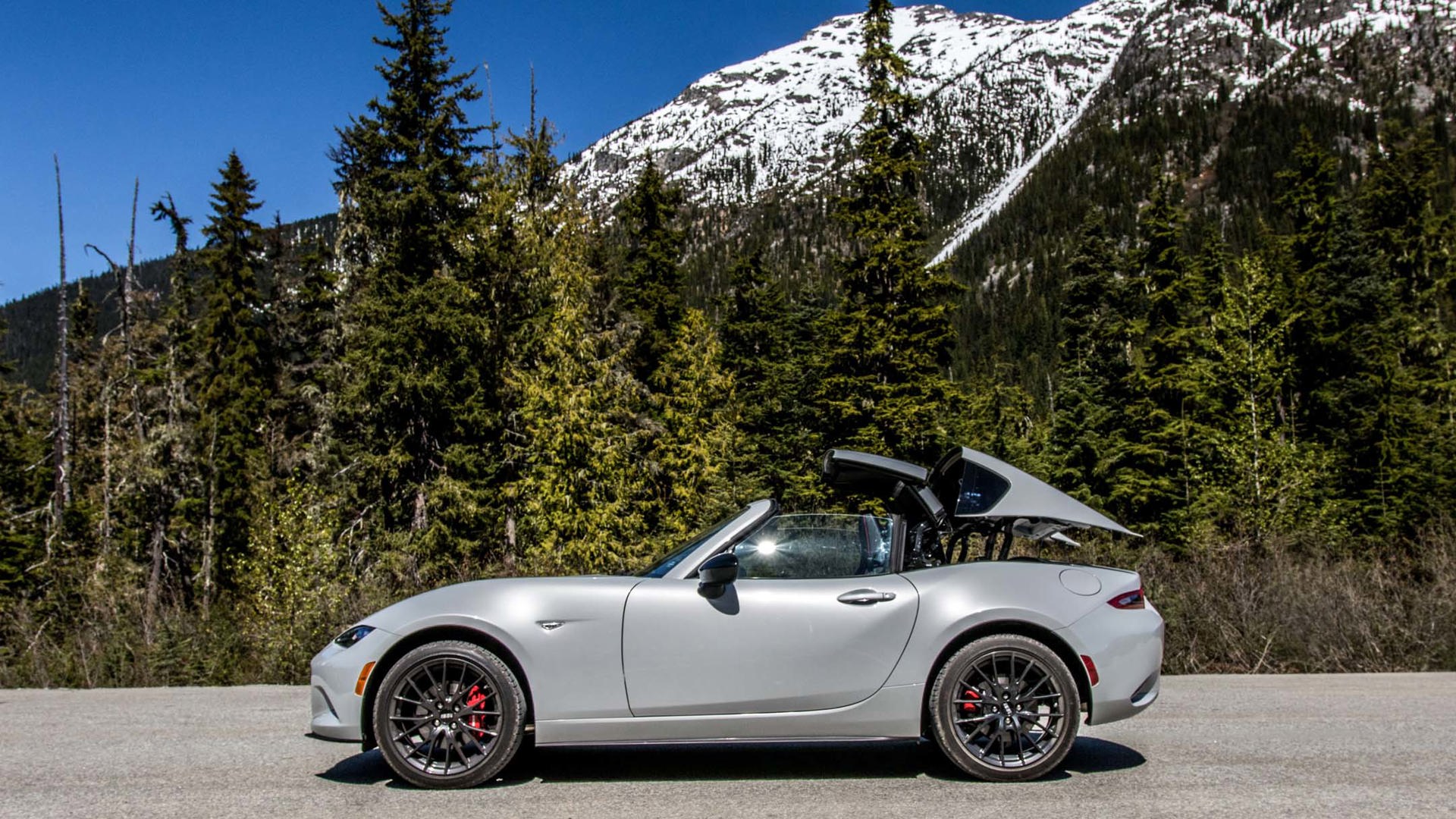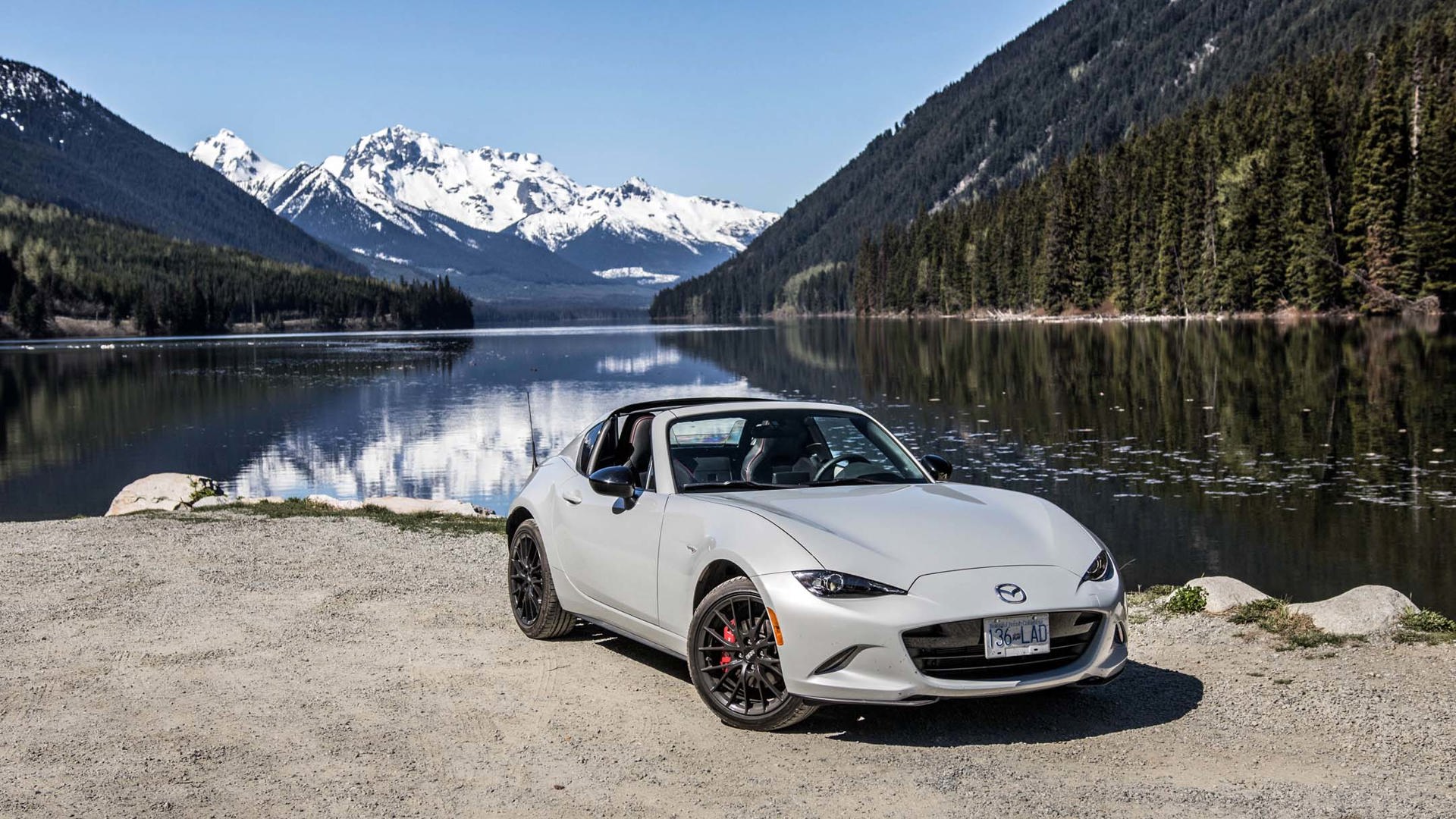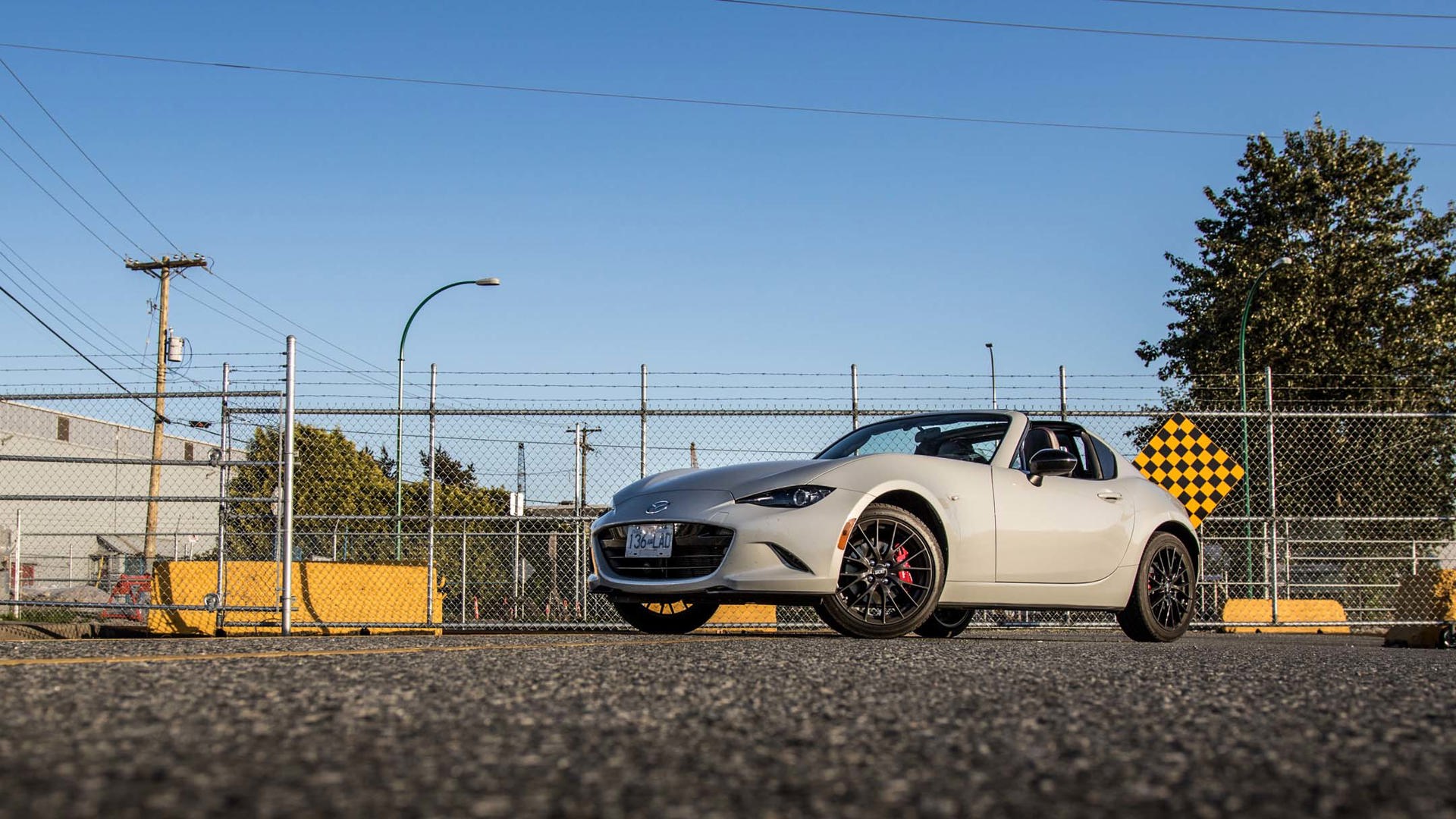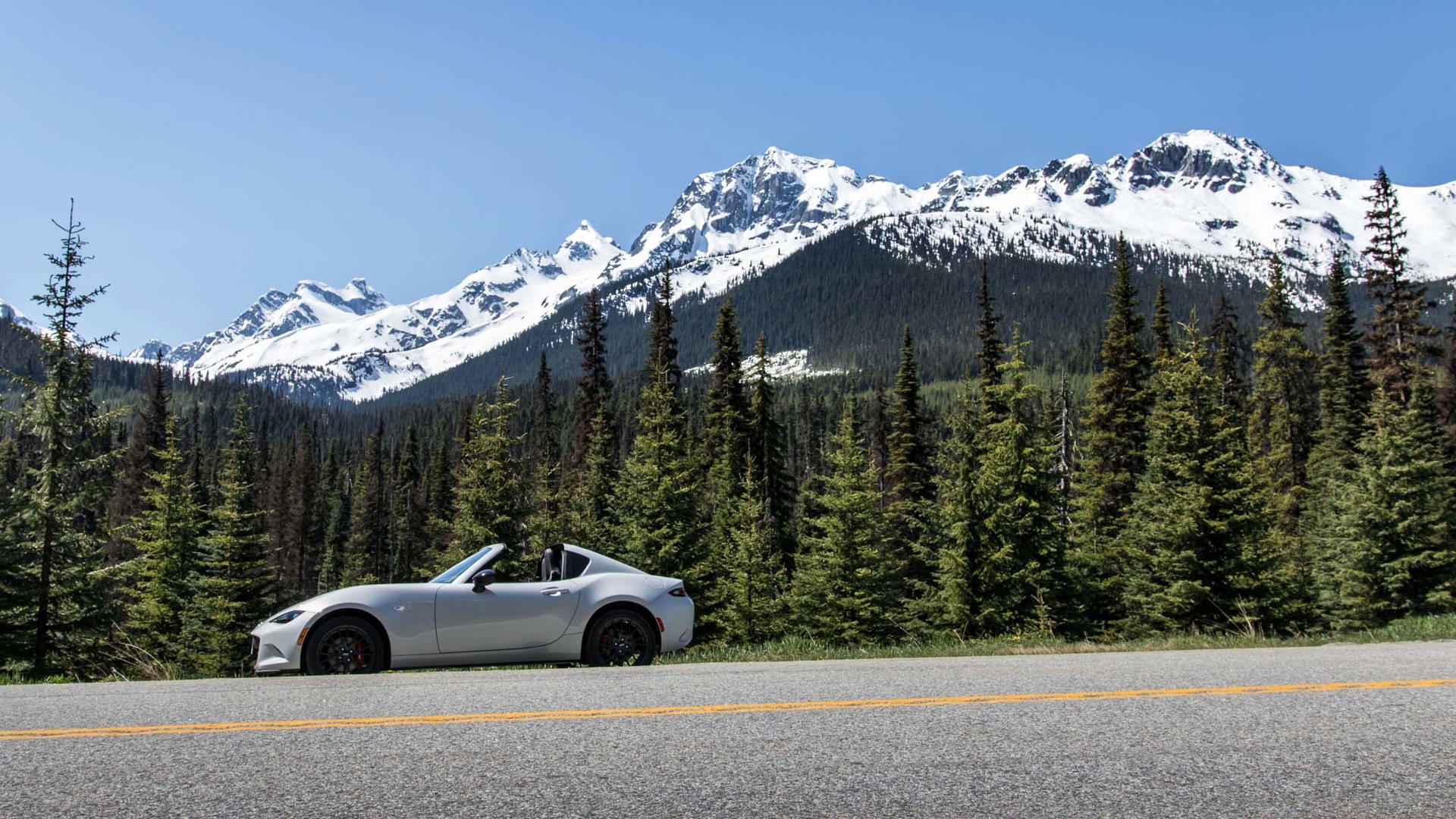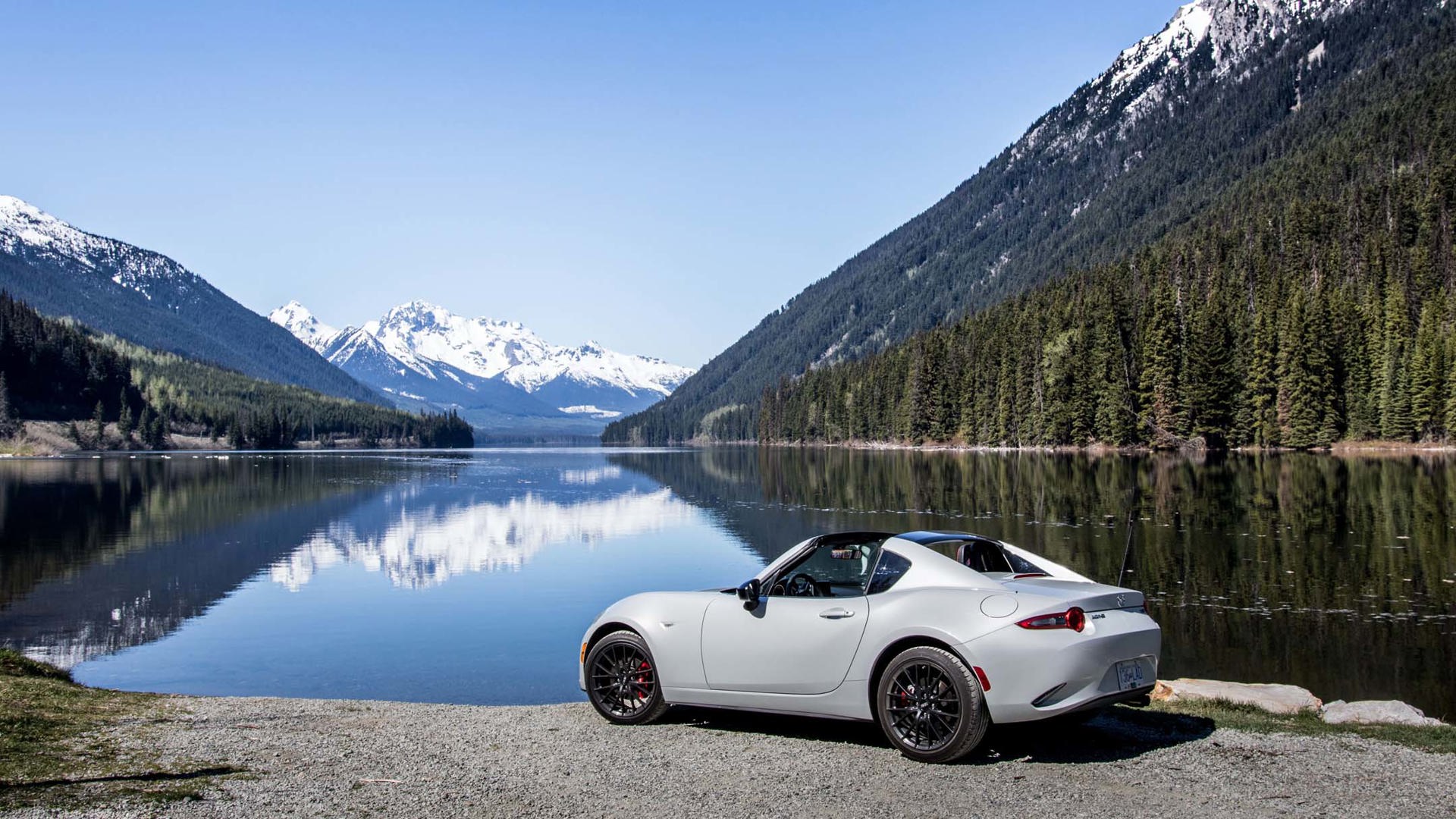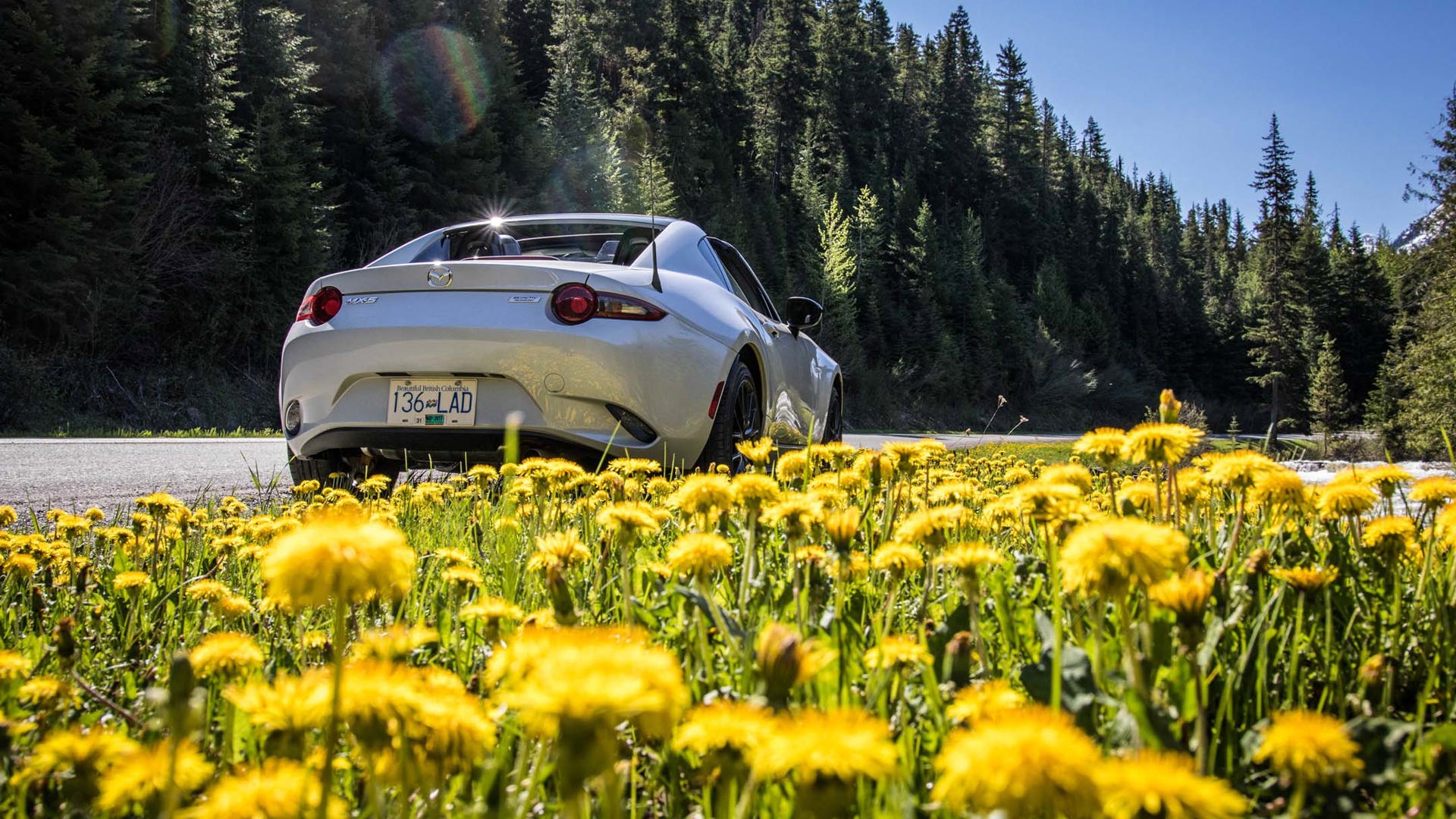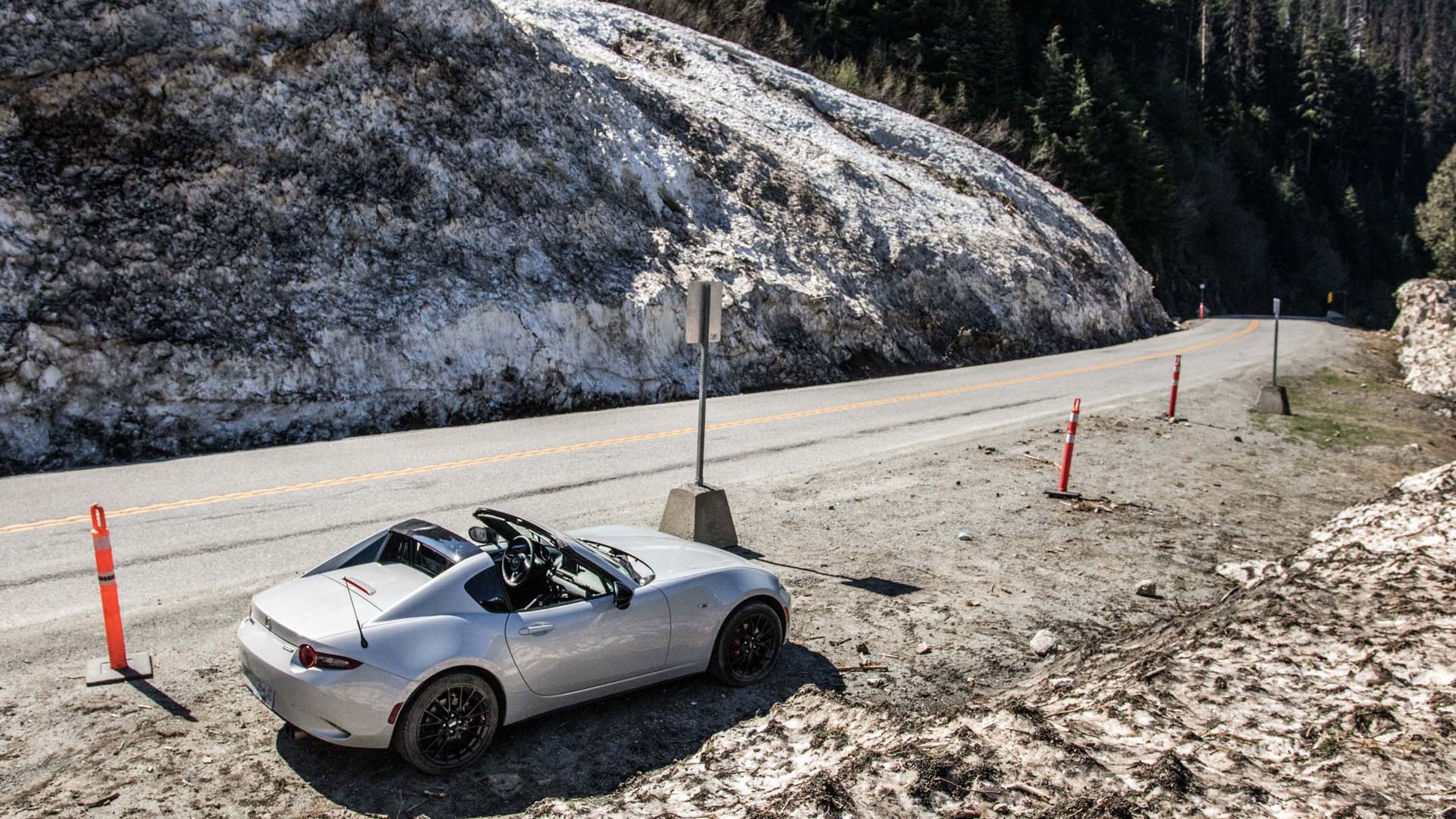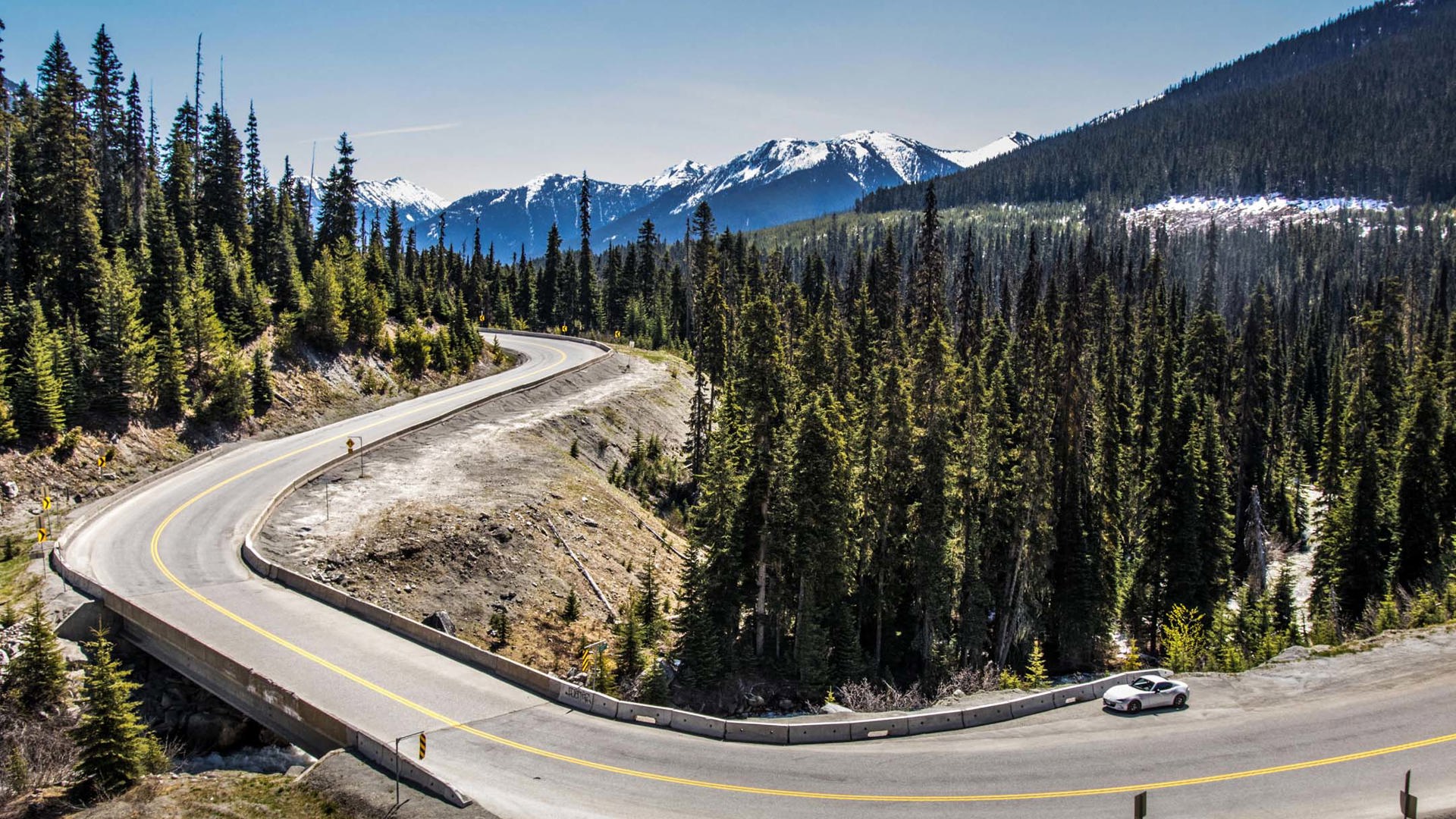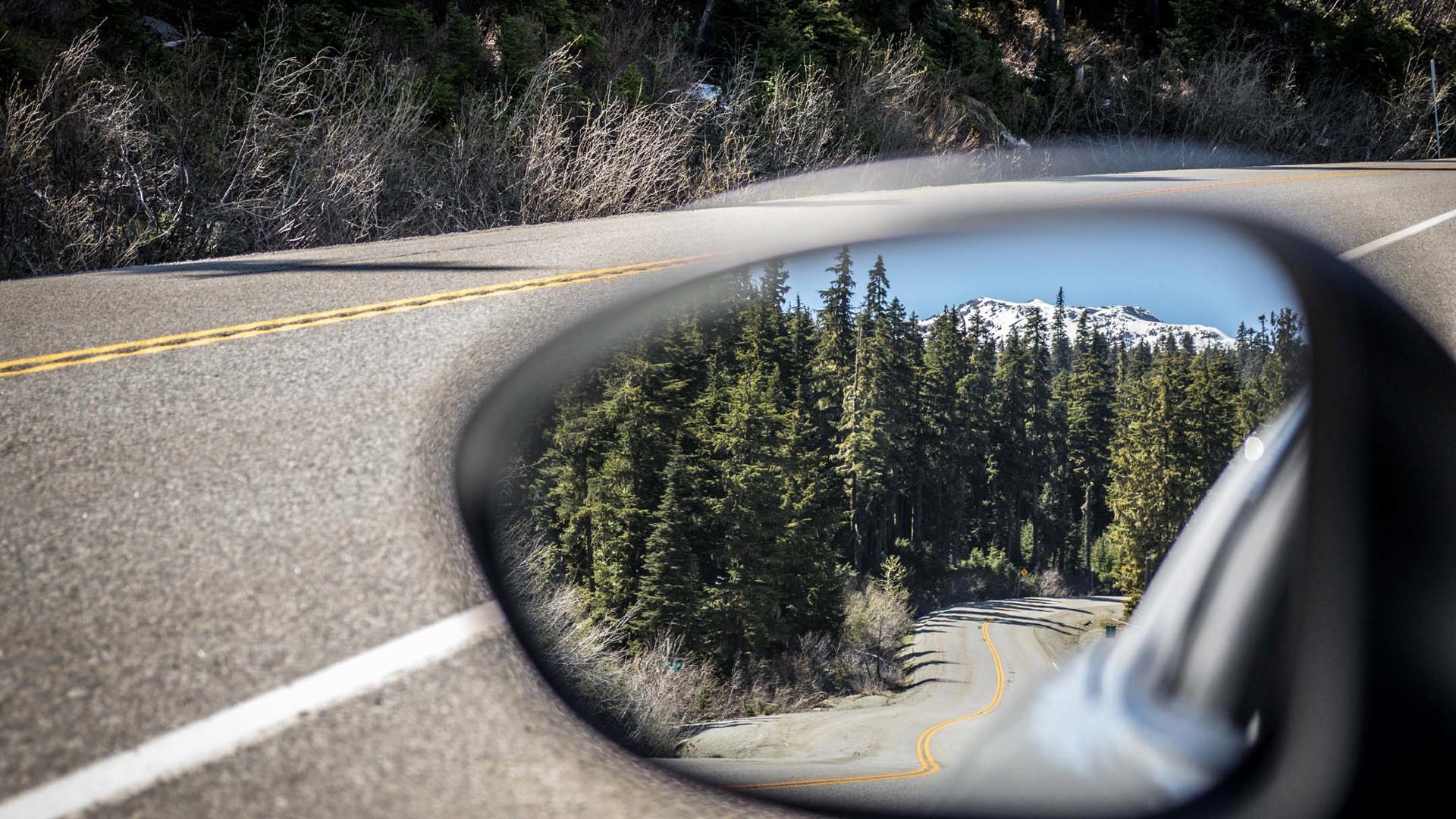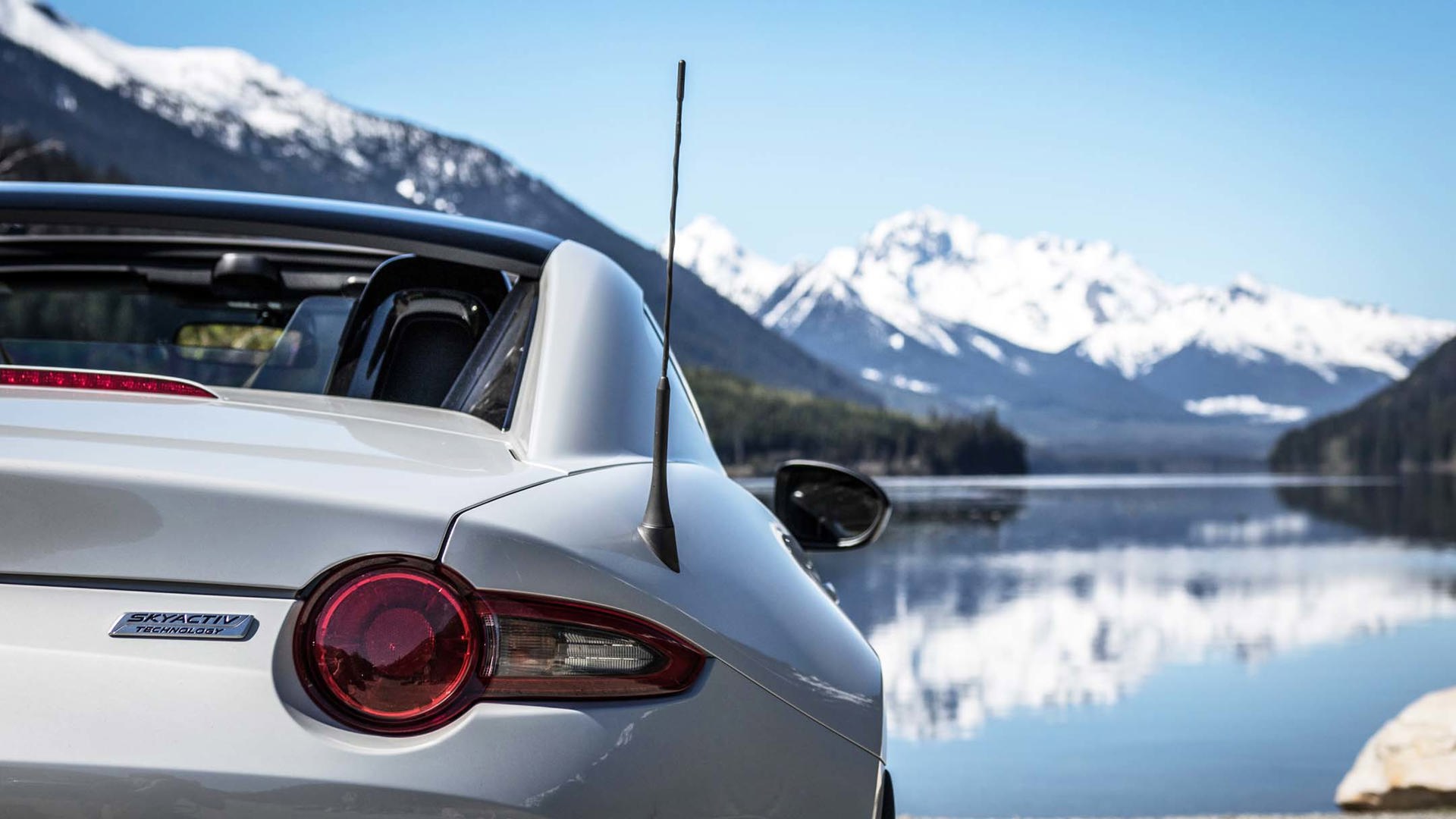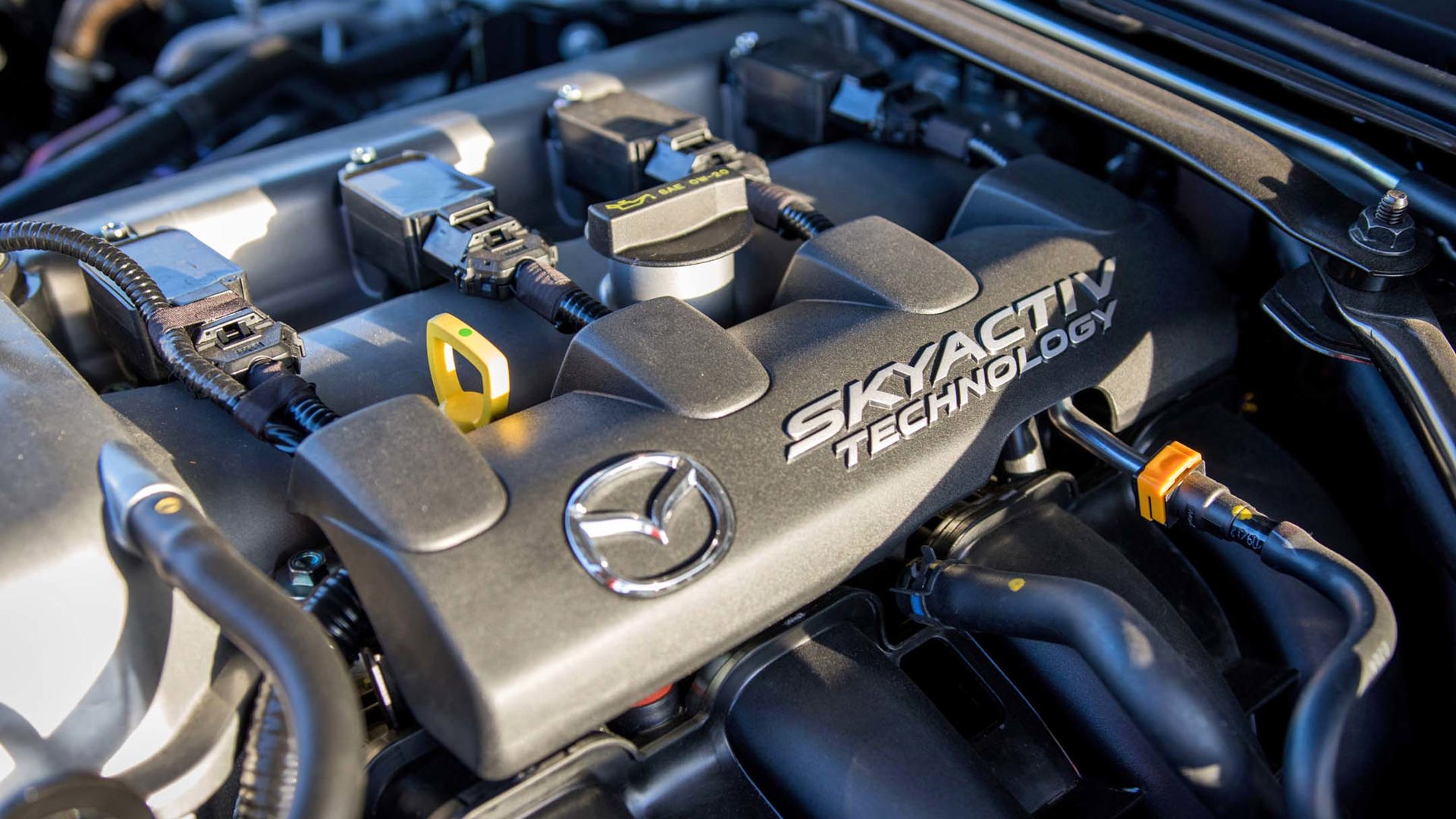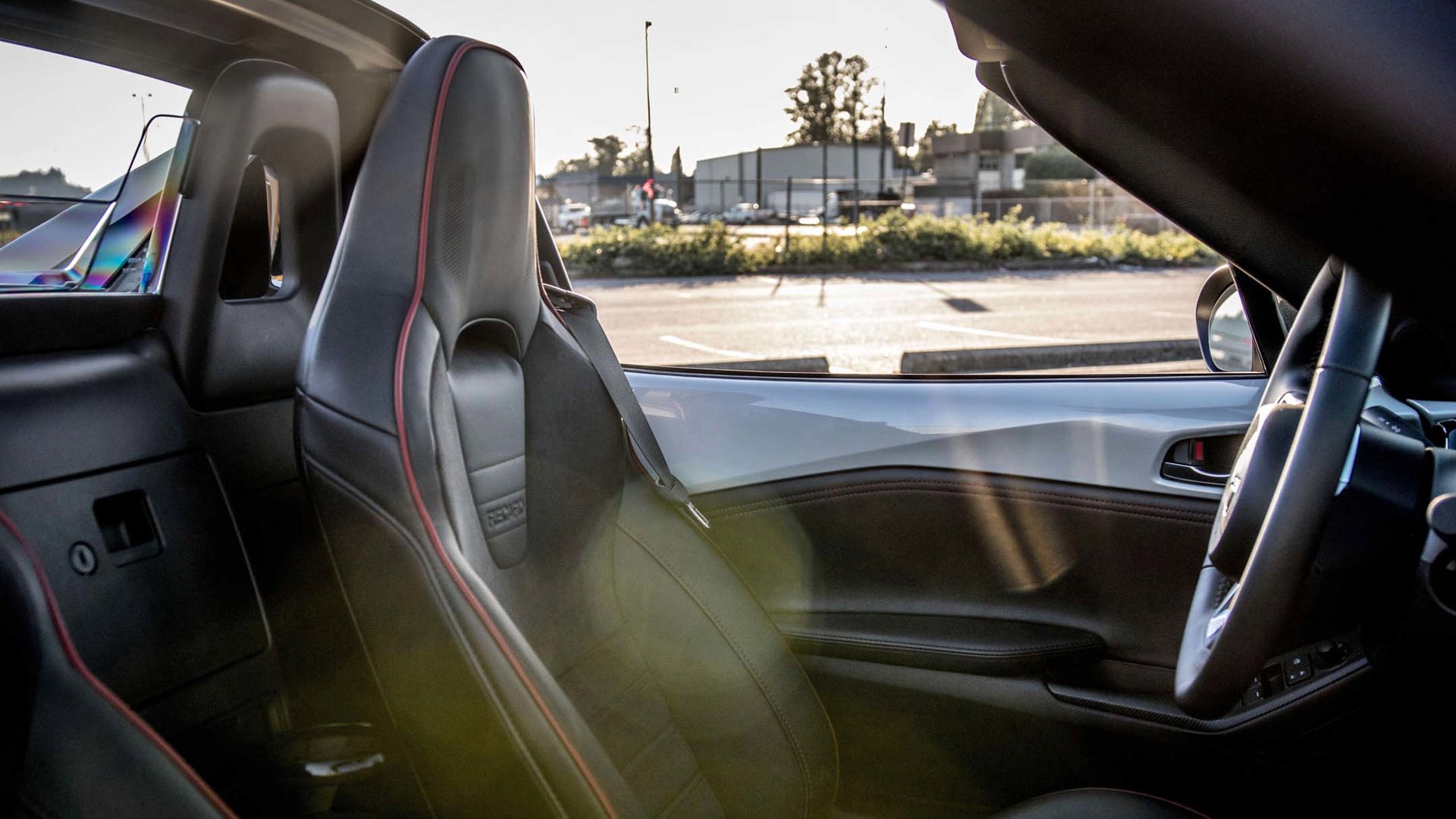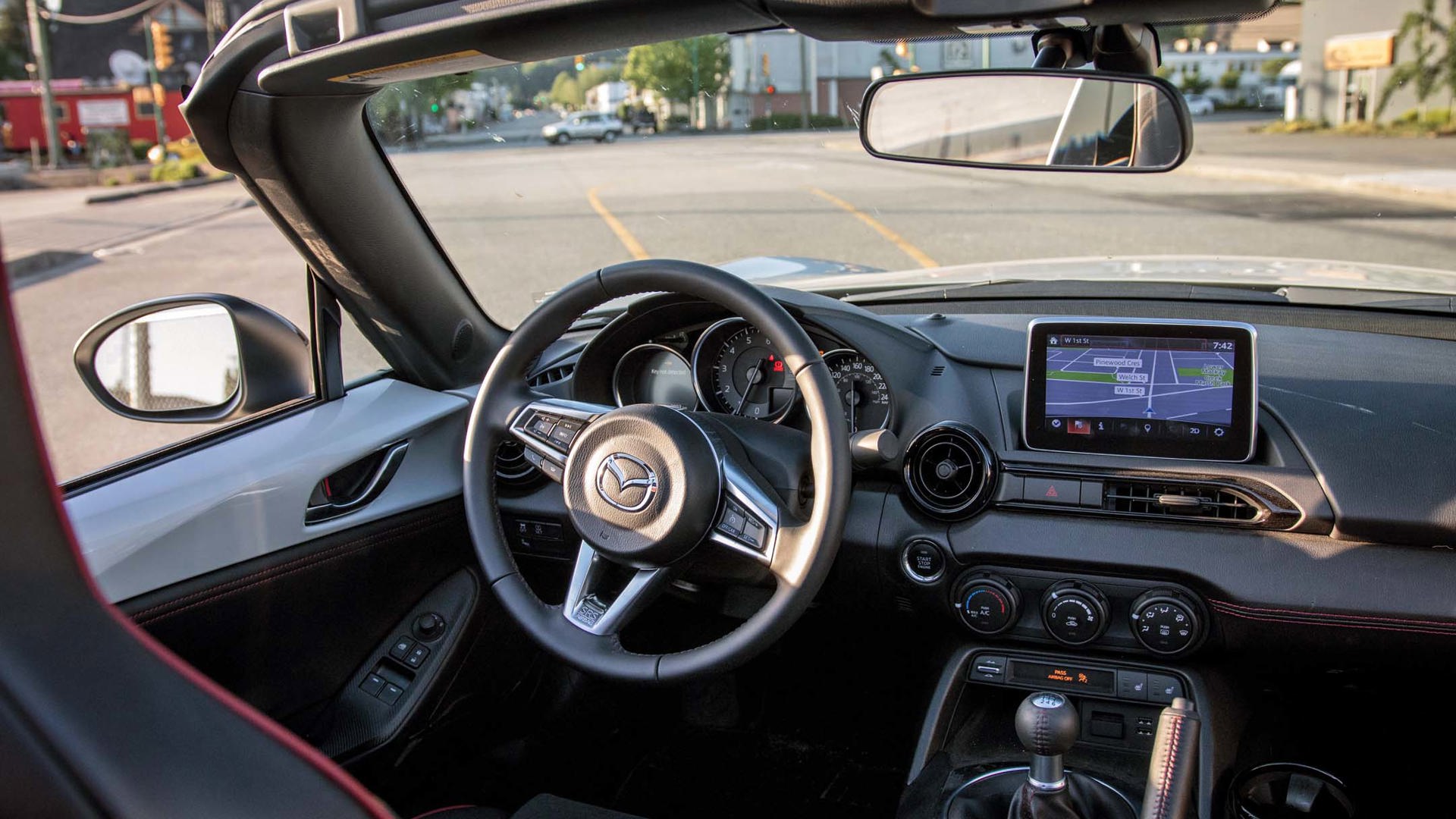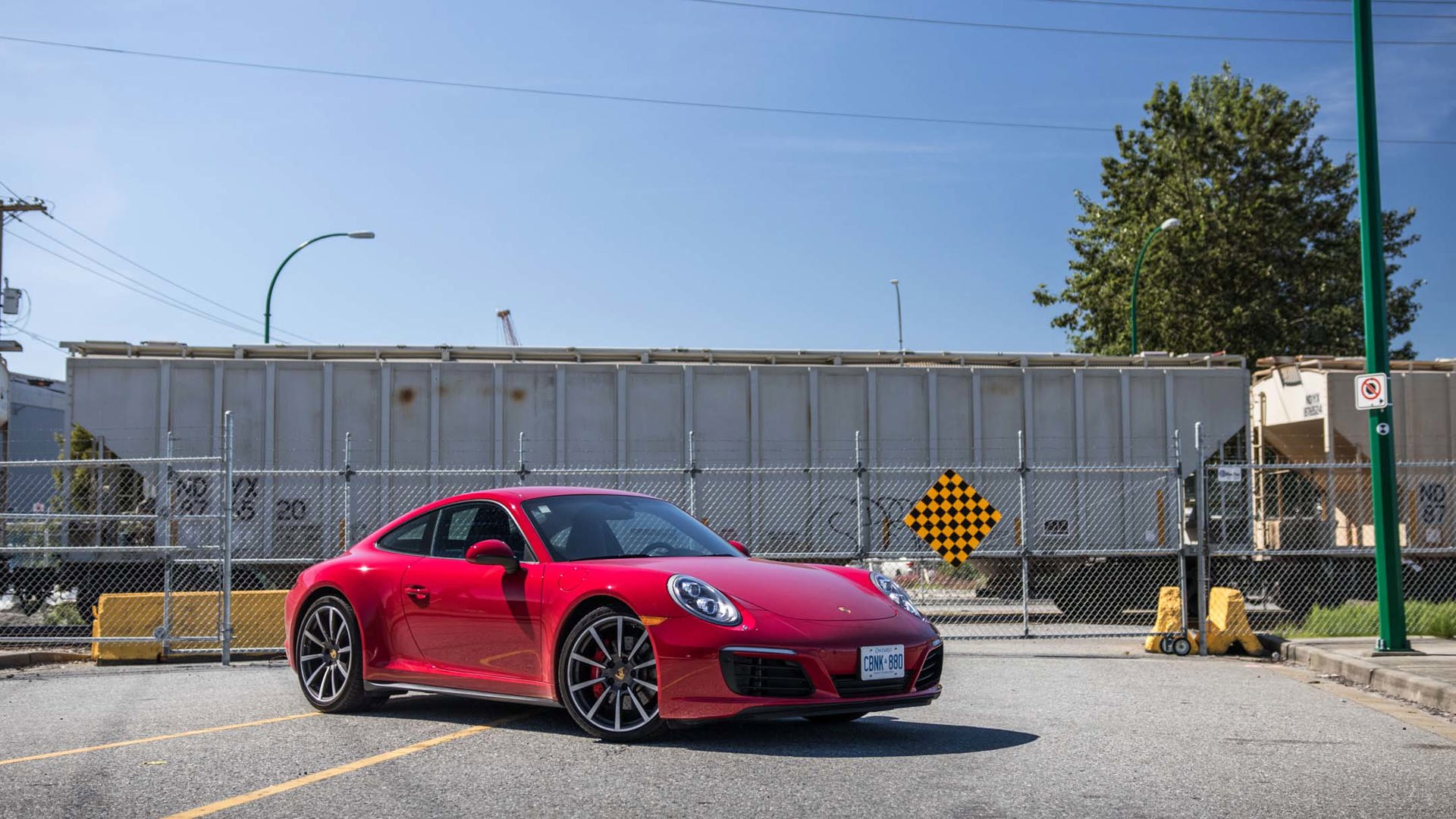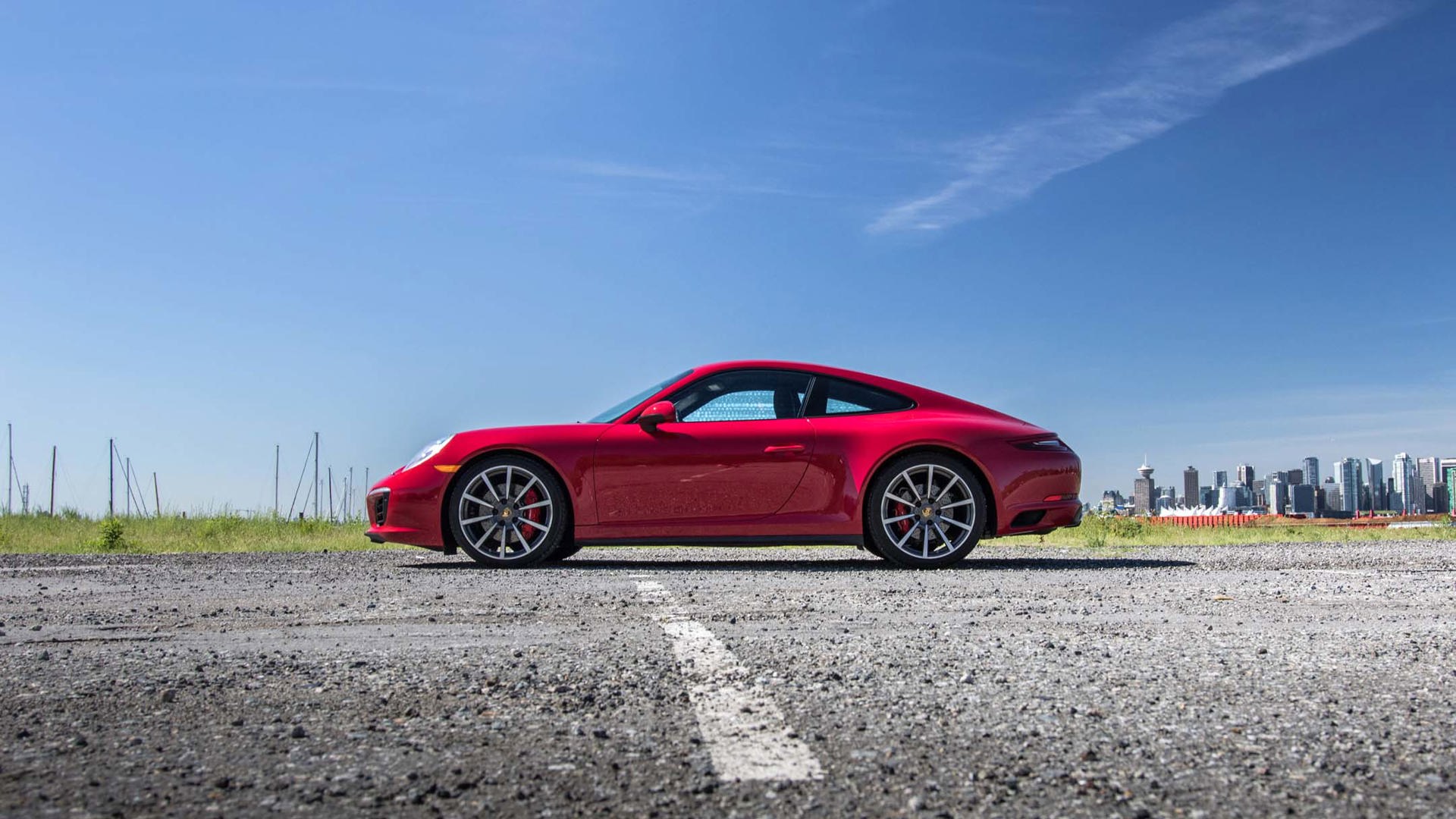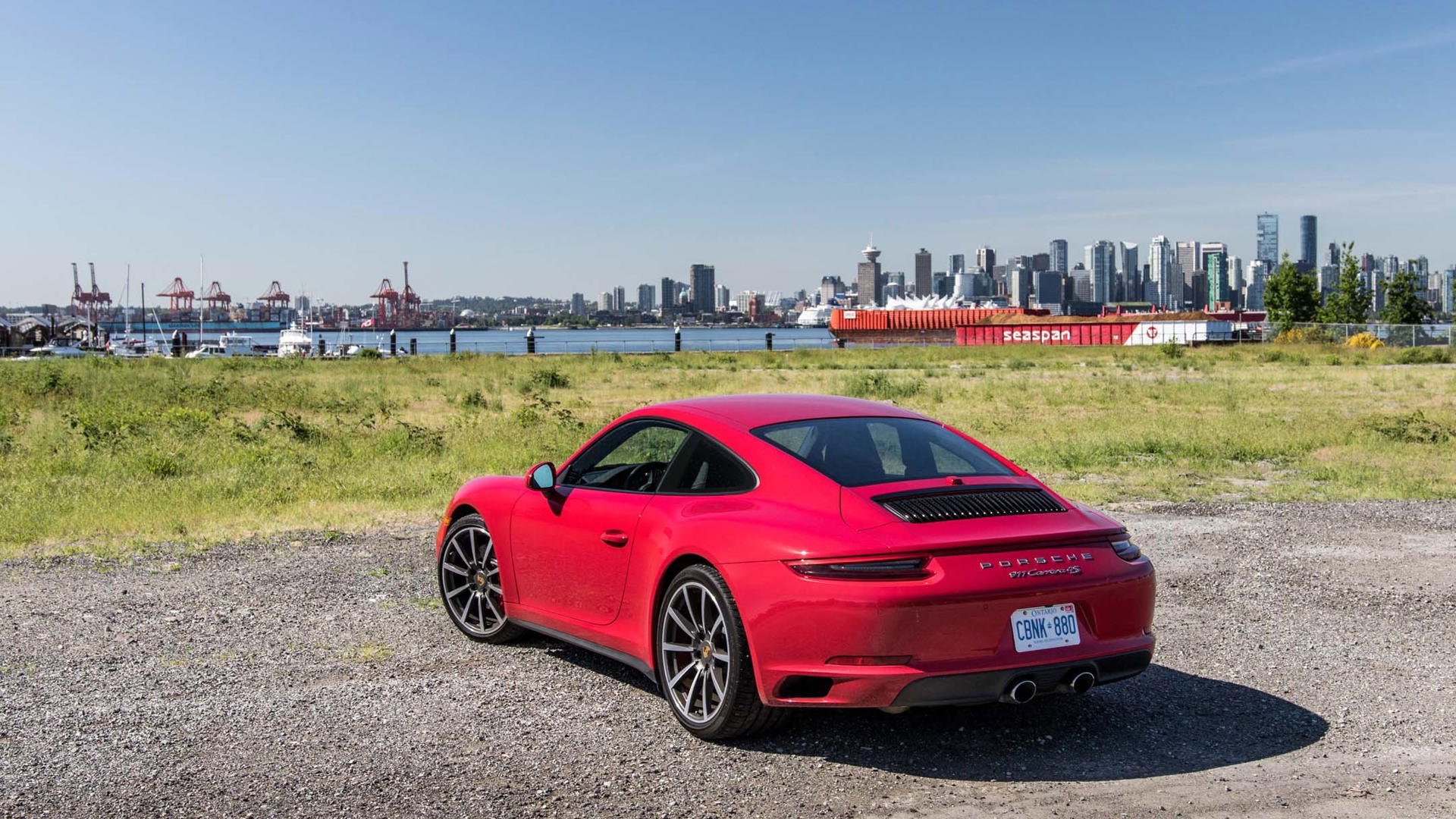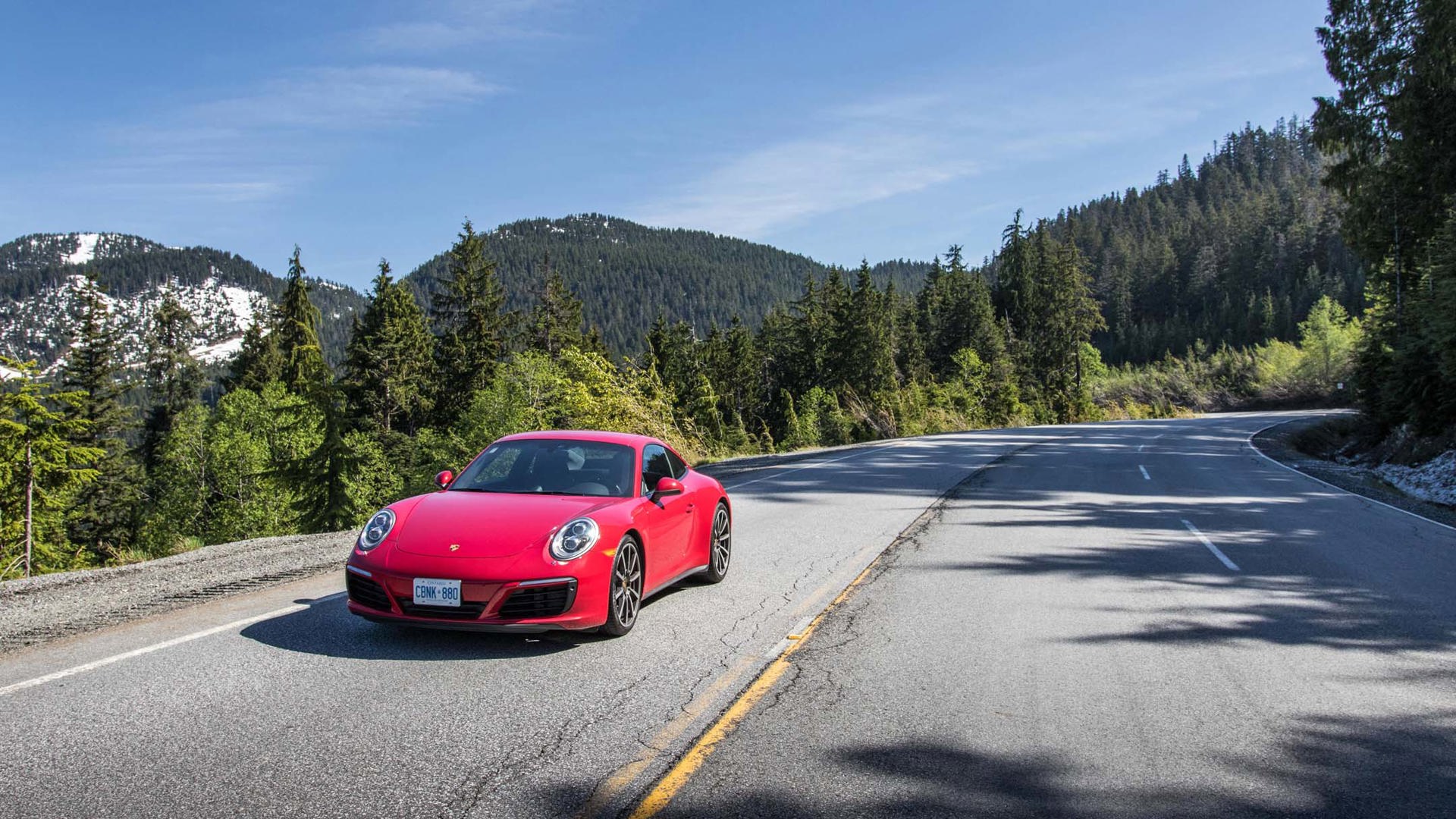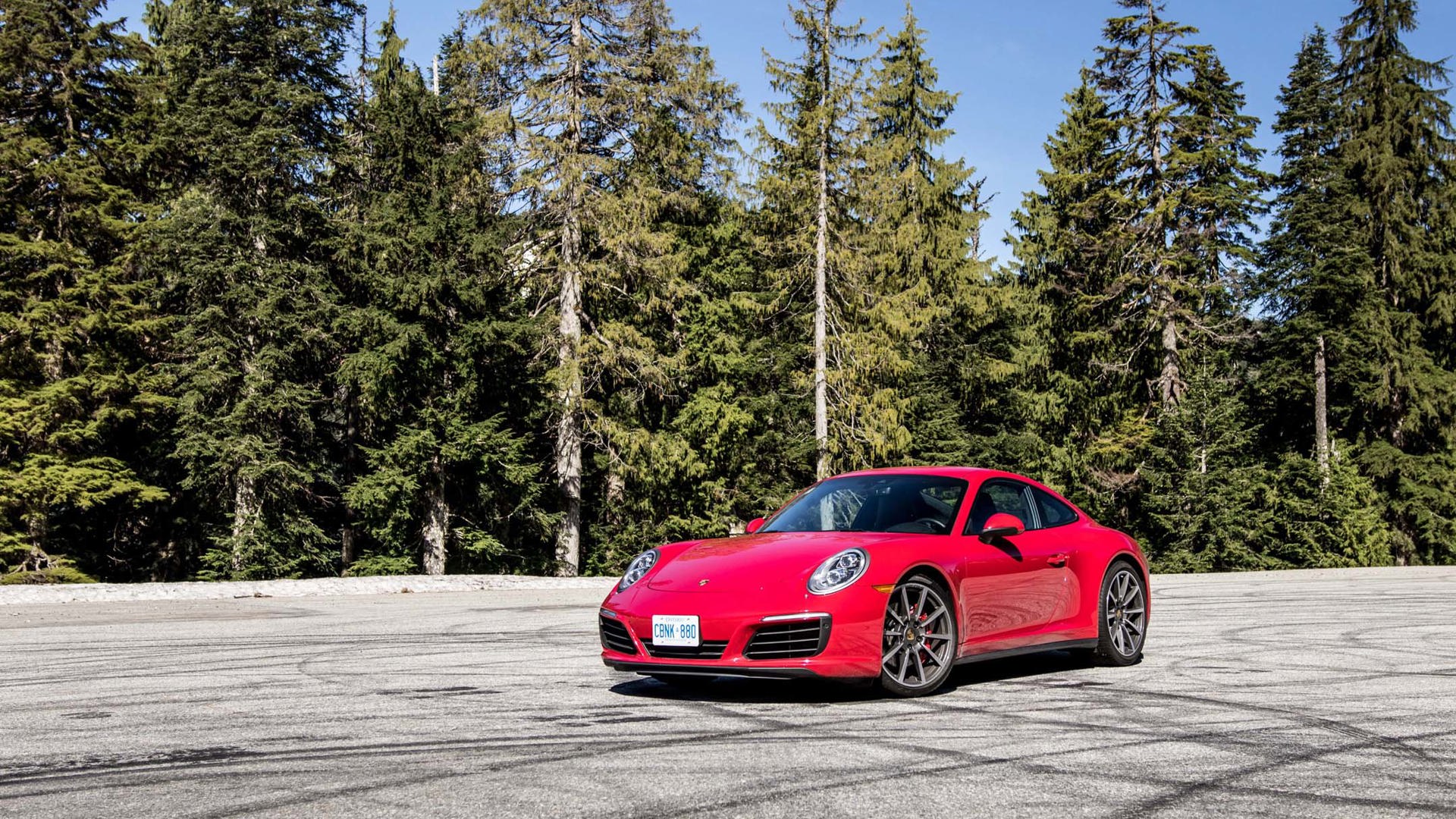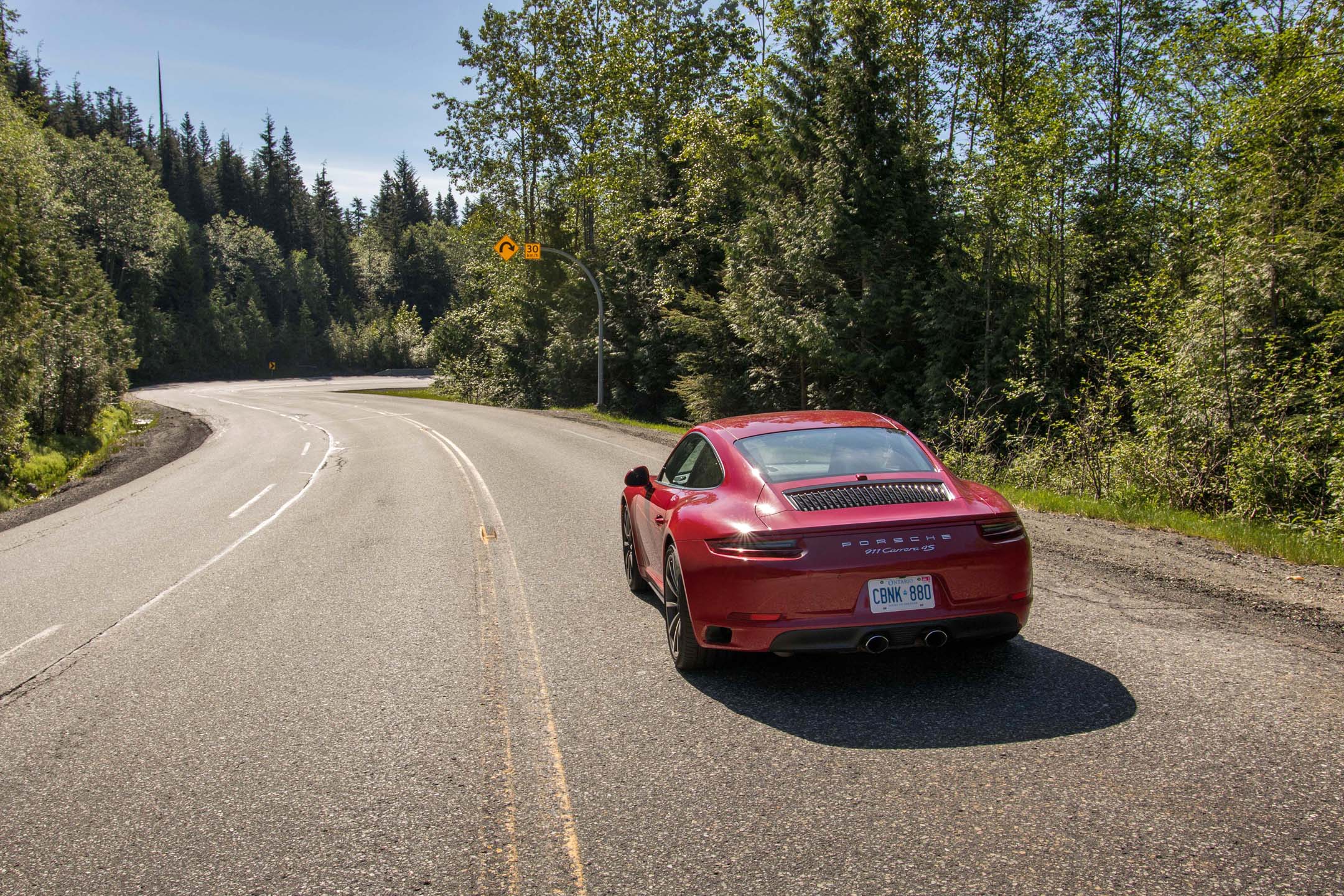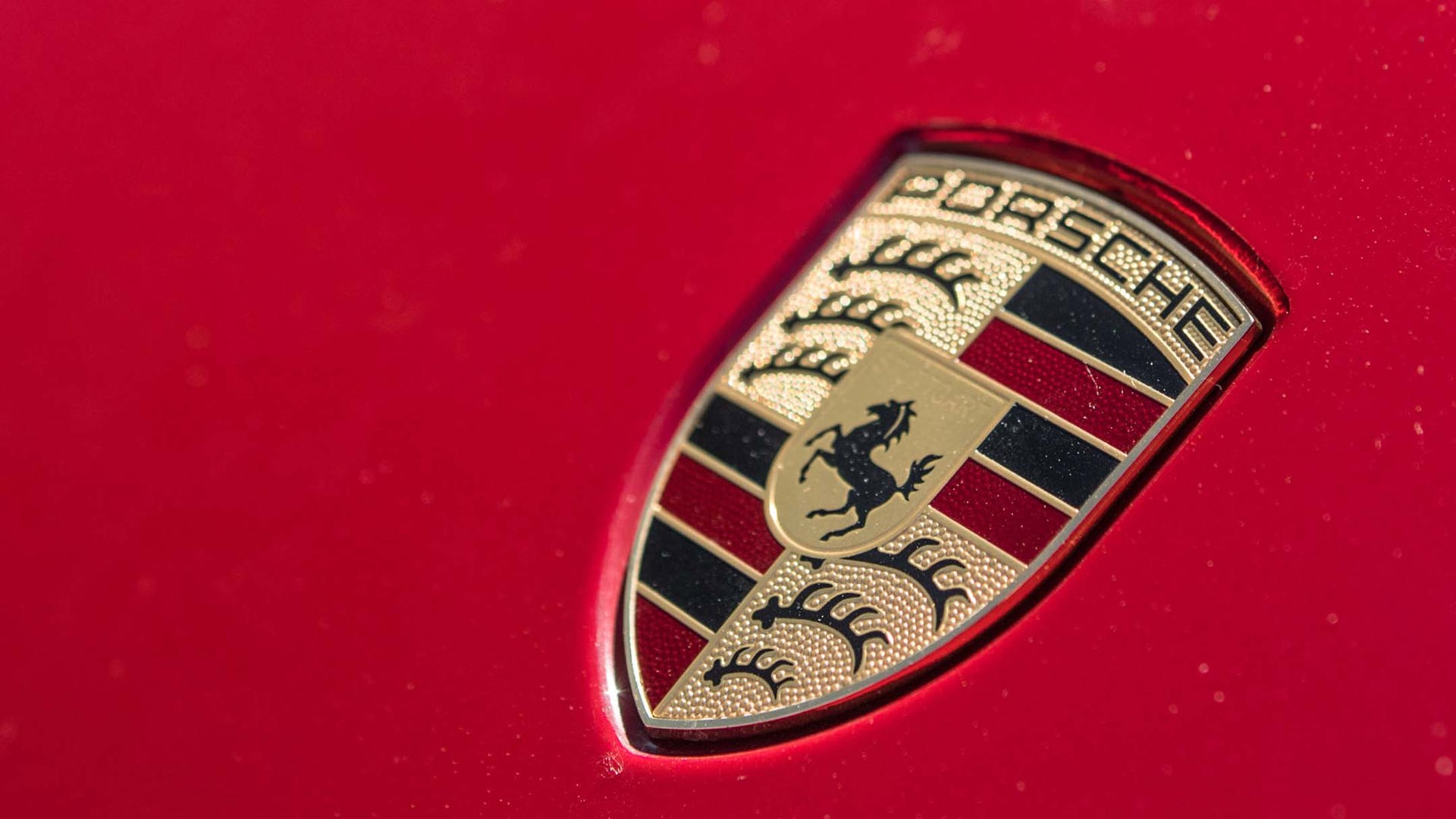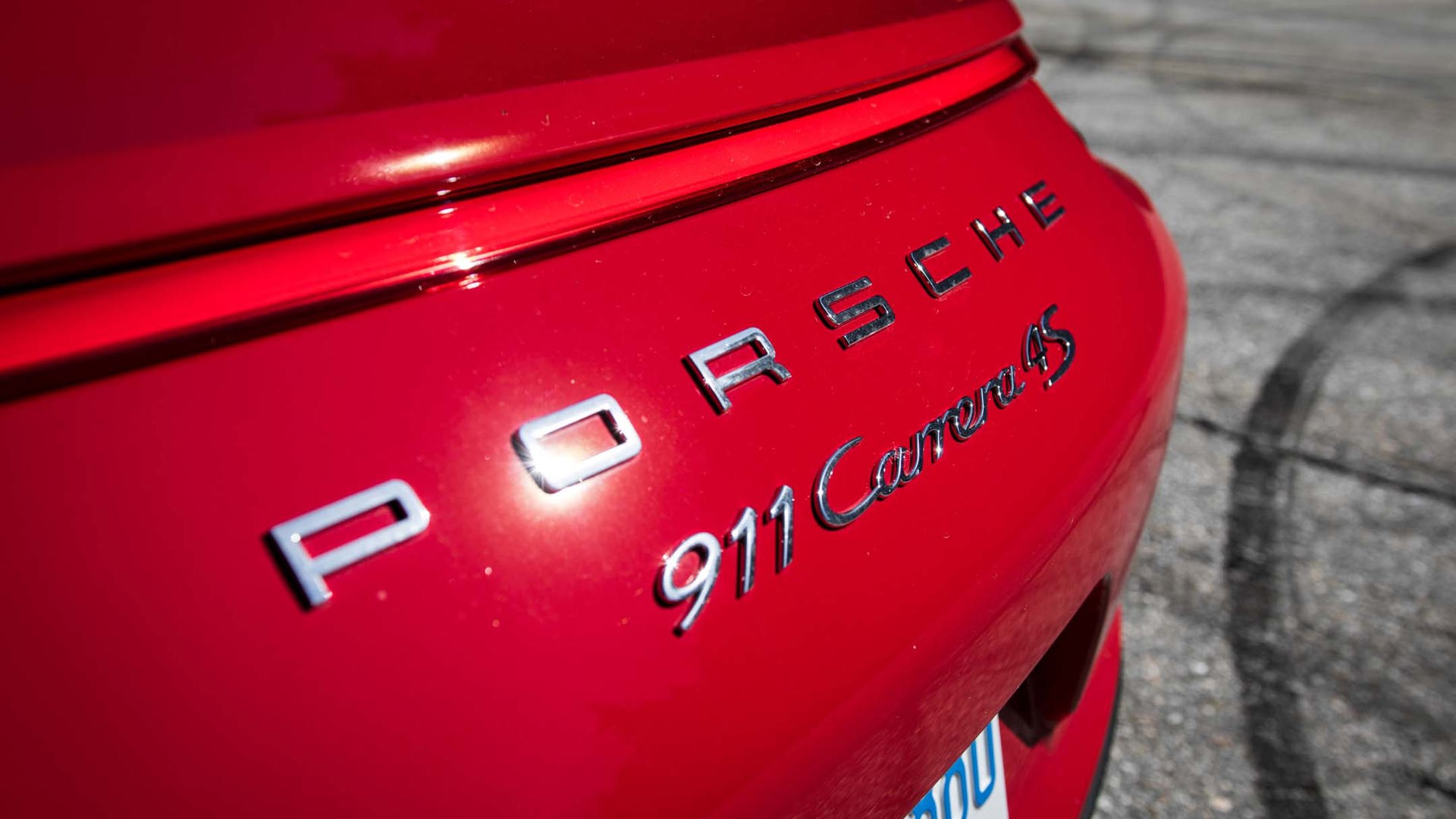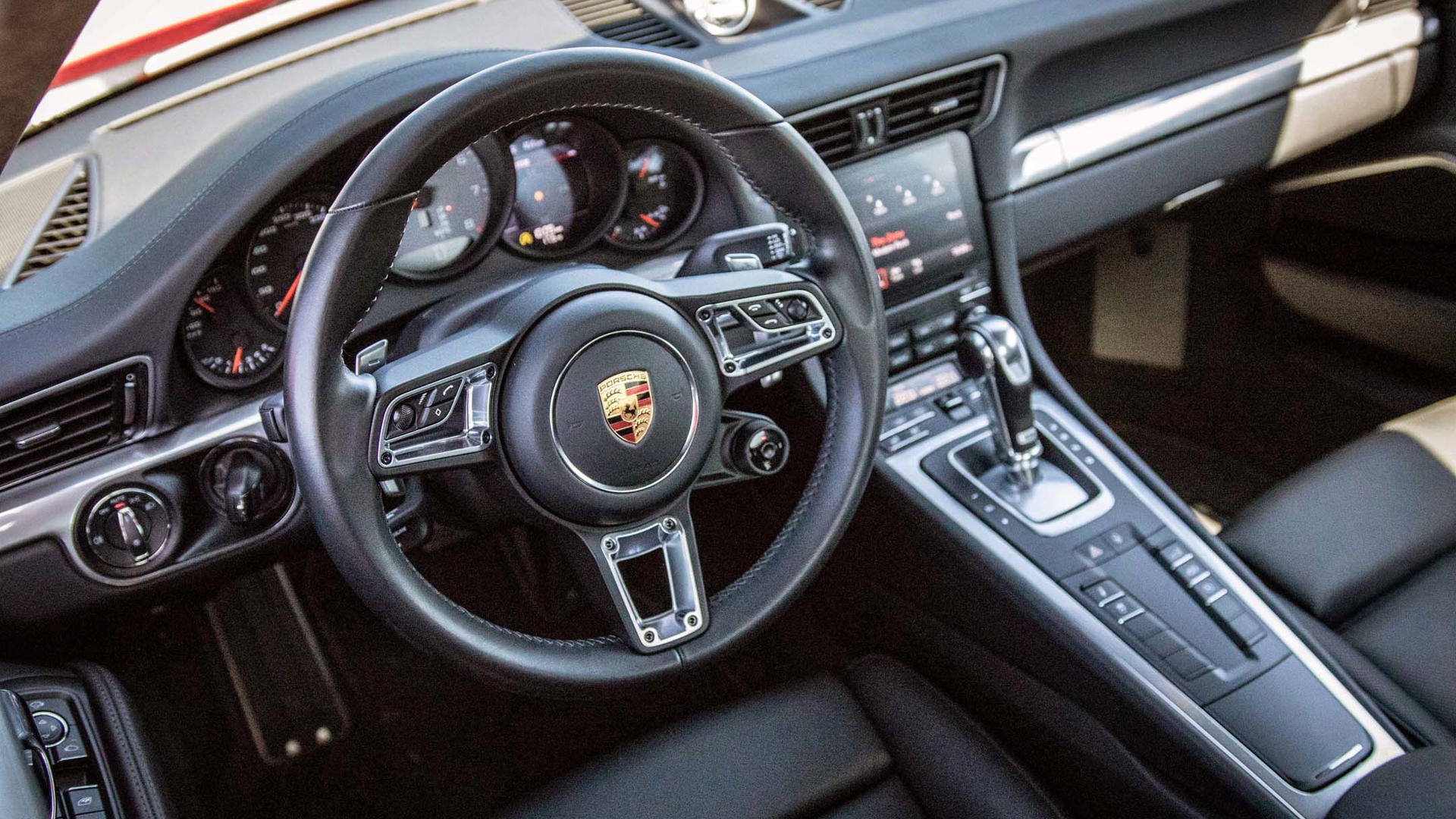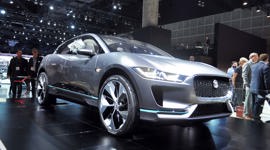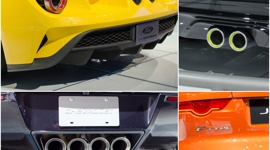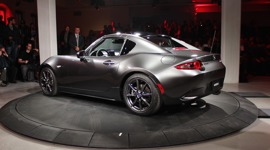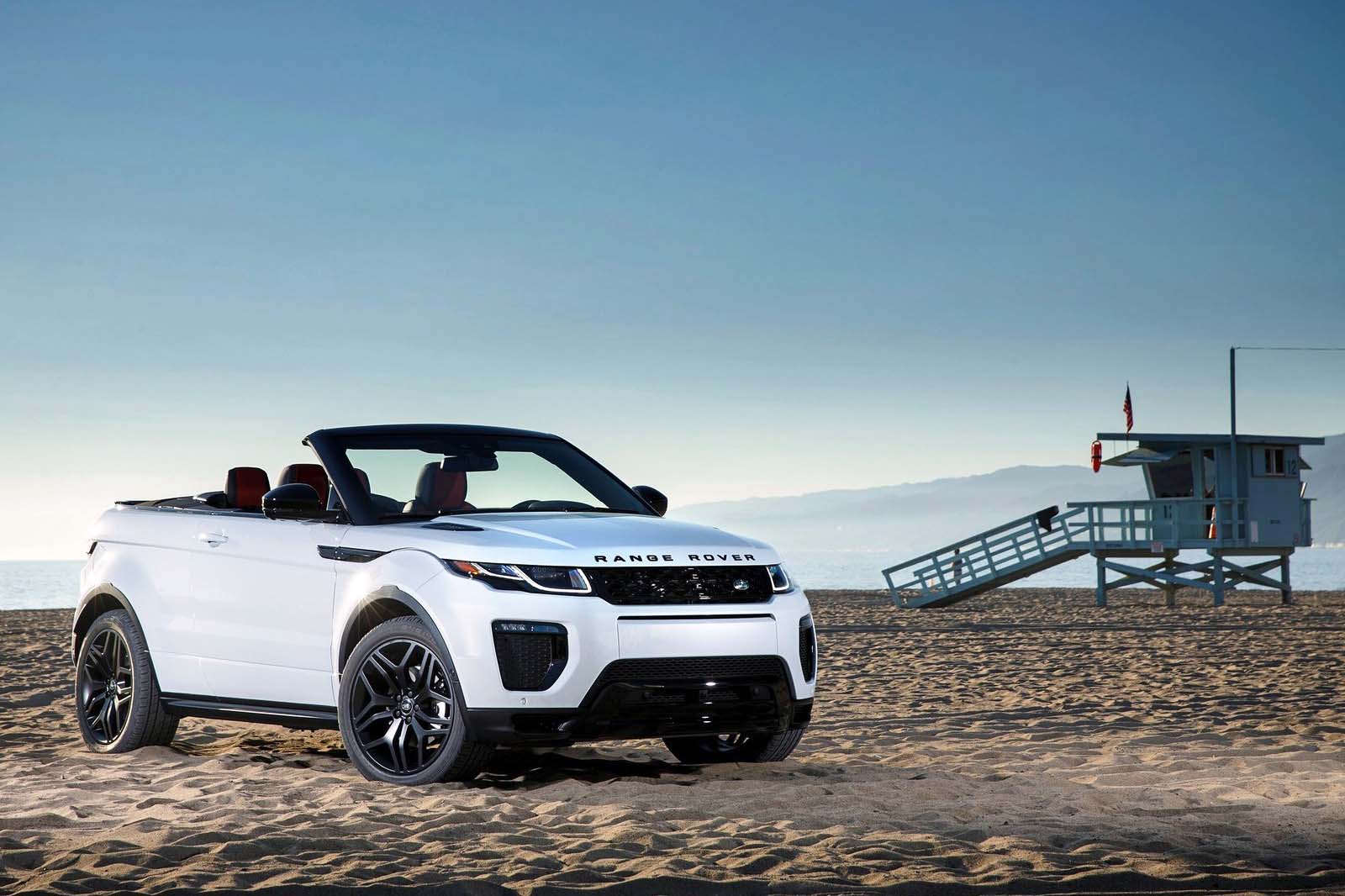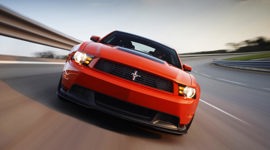Let’s begin with the keys.
In order to start the red 2017 Porsche 911 C4S, you walk up to the car, pull the door handle, the door unlocks, then you must fish the key out of your pants (a key that is shaped like a little 911), insert it to the left of the steering wheel, and turn it. In order to start the grey 2017 Mazda MX-5 RF, you must first unlock the car with the unremarkable oblong keyfob, and then climb in and hit the starter button.
In the same way that a handshake can tell you pretty much everything about the person you’ve just met, both the little ceremonies listed above are a perfect introduction to this unlikely pair. The 911’s procedure is a blend of technology and theatre and mild inconvenience; you can get keyless-go if you want, but it will cost more money. You can also get your key fob colour-matched to your car, the better to show off that you own a Porsche, for more money. You can have more power, a convertible roof, a targa roof, even more power, or a giant rear wing – you can have anything you want, for more money.
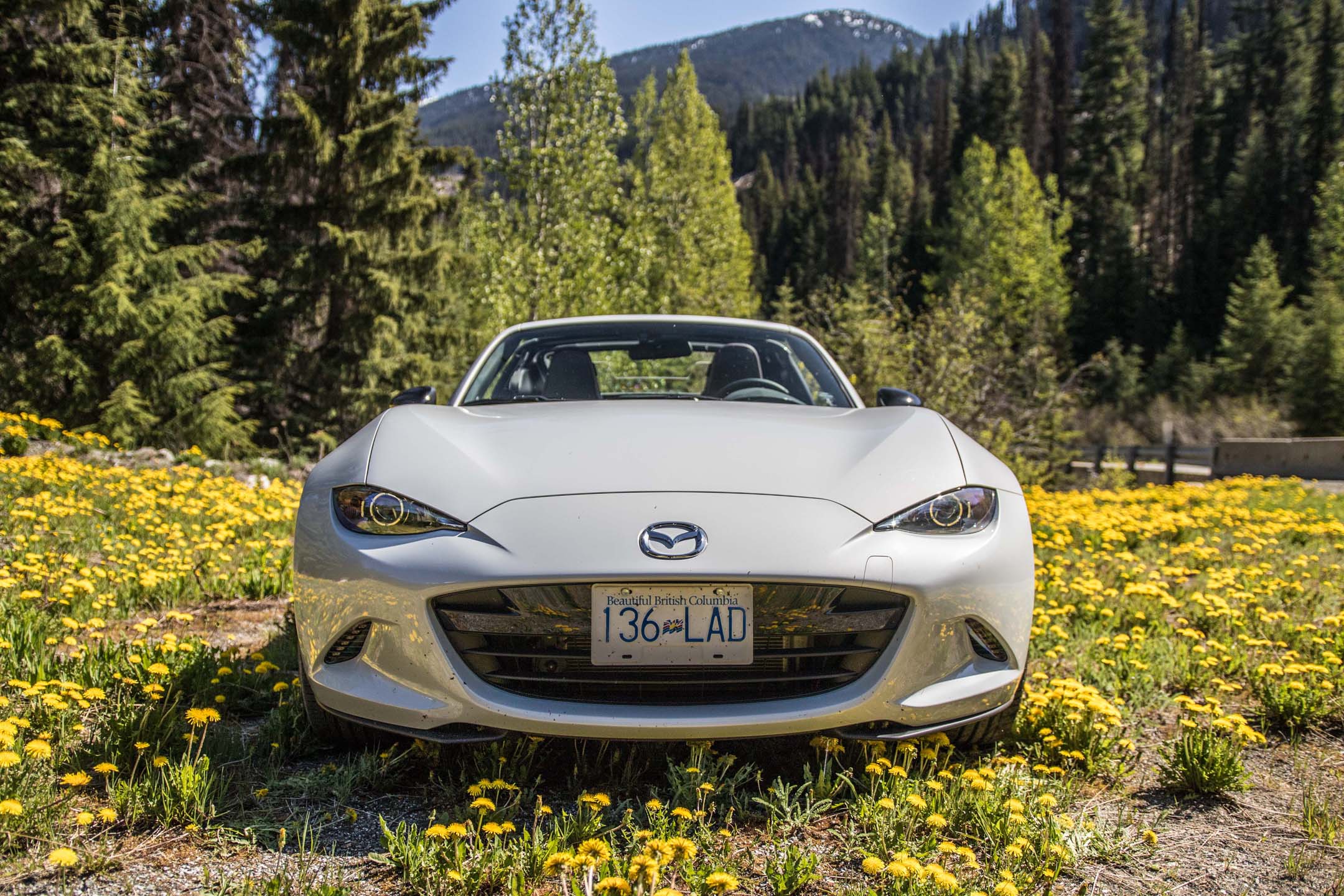
The MX-5, on the other hand, has a push-button starter because it’s just cheaper and easier to make them all like that. You can’t get a bigger engine, and you can’t have all-wheel drive, and gomennasai, we don’t really do a coupe. There is some choice to be had, but look, this is a sports car. It’s supposed to have focus. No sport button for you.
As unalike as they seem, both the 911 and the MX-5 have something in common. What? No, not the completely idiotic cupholders, or rather, not only the completely idiotic cupholders.
As of time of writing, they are both million-car trophy holders. The millionth 911 ever made is currently touring around the Scottish Highlands, and the millionth MX-5, covered in signatures, is sitting in a museum somewhere.
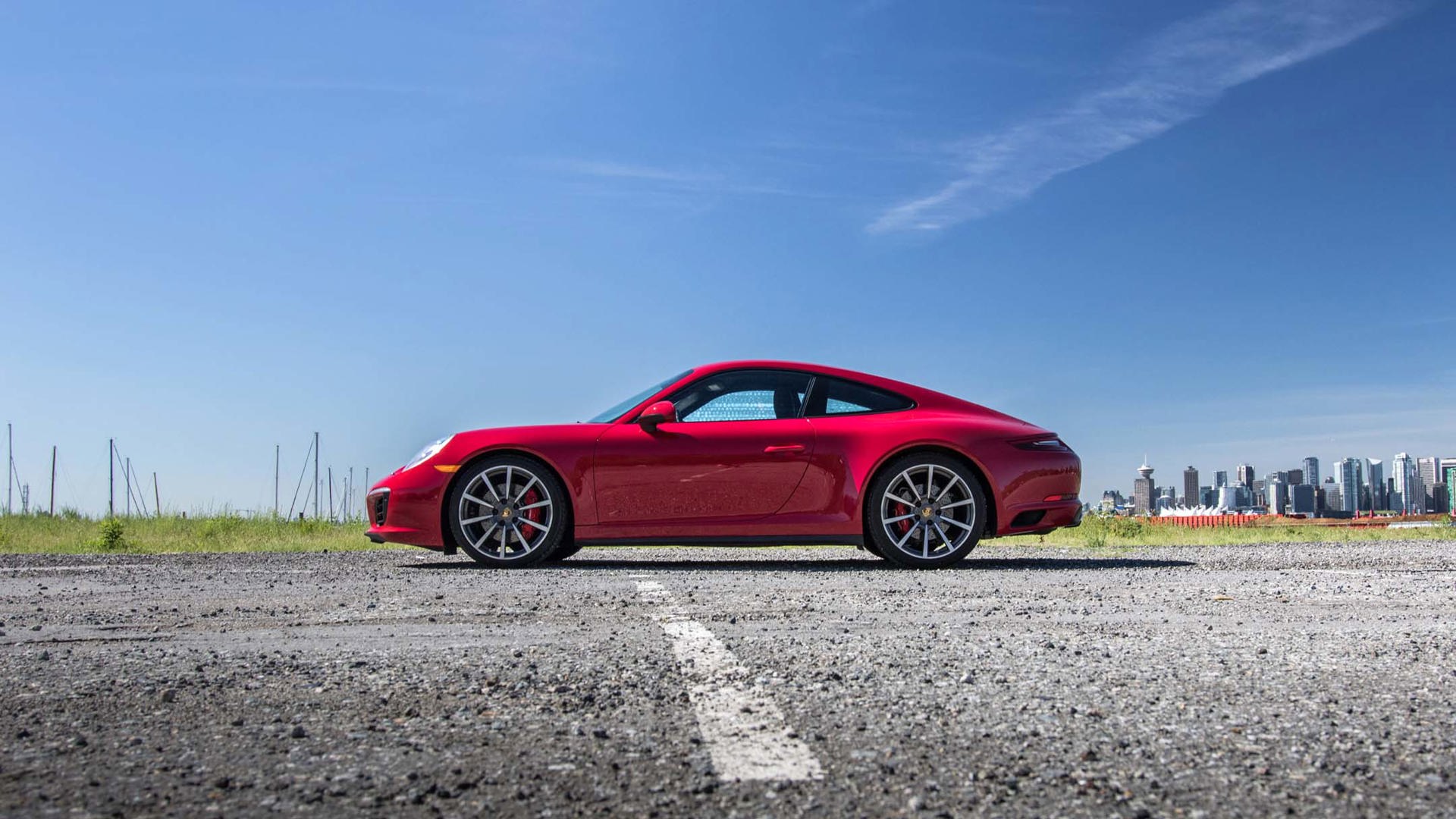
Selling a million cars is certainly a milestone, but when a car is very successful, it doesn’t usually take very long. The Volkswagen Beetle, for instance, took about seven years to go from a quirky little German oddity produced at a rate of 20,000 per year, to the millionth car sold. Toyota took fourteen years to move one million Priuses (Priuss? Prii? This never looks right to me [How about “Priora” or “Priores”? –Ed.]).
In Mazda’s case, selling one million MX-5s took from 1989 until 2016. That’s certainly pretty leisurely, but looks positively speedy compared to the 911. Porsche hit the 50th anniversary of the 911 in 2013, but had to wait a further four years to push the millionth off its line. Cost certainly has something to do with it, but both the little Mazda and the powerful Porsche can claim to be the most successful cars of their type.
We’ll call that type “sporting cars” rather than “sports cars”. The MX-5 qualifies as a sports car to pedantic types, being a small, open two-seater that would be suitable for competition. This RF version is more a targa, but that shouldn’t dismay anyone. Most of those million MX-5s are convertibles, and a large chunk of them have been used in door-to-door racing.
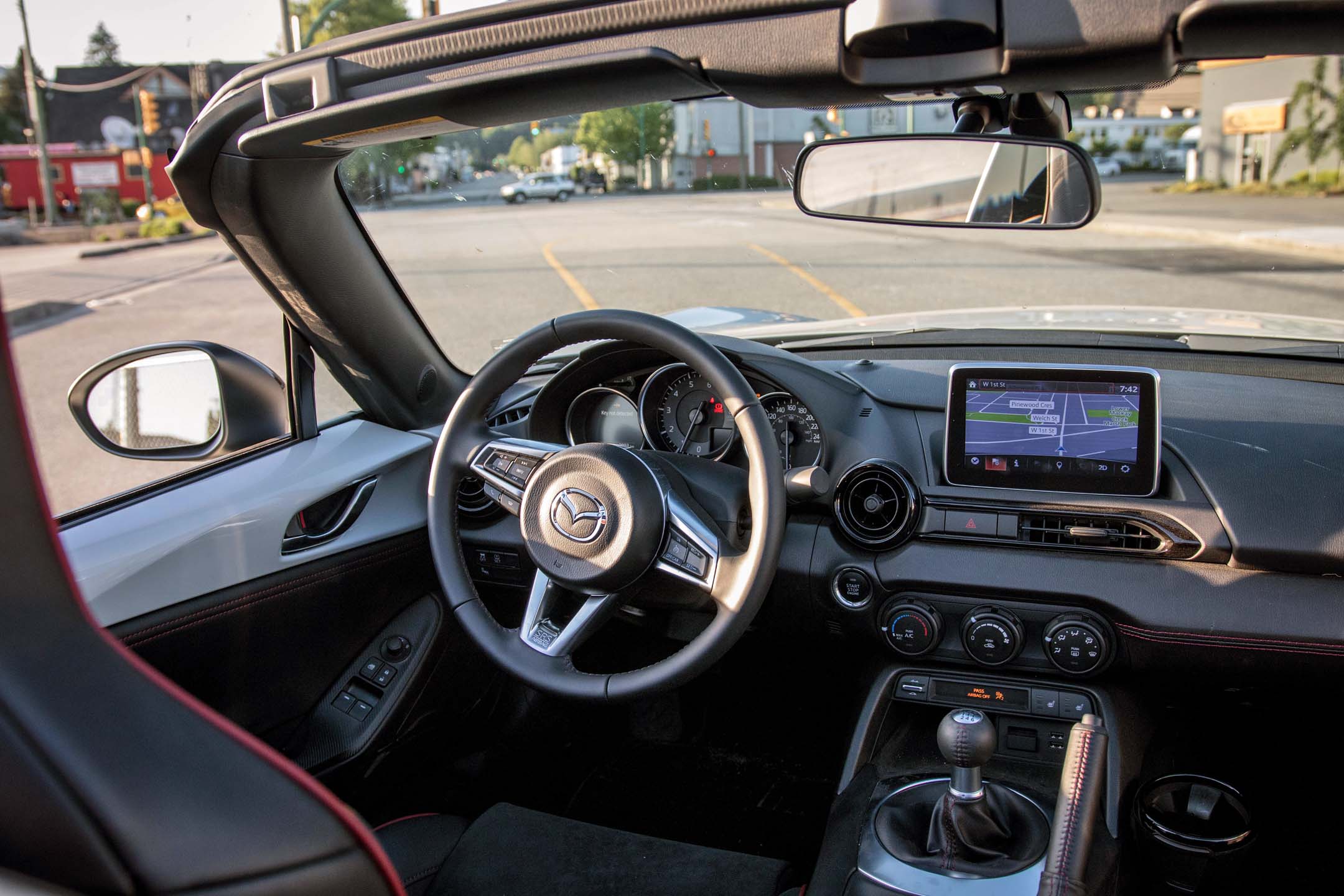
The 911 is more properly a 2+2, albeit a very fast and agile one. The Cayman and the Boxster (and no, Porsche Marketing, I will not add the 718 prefix to either, no matter how much you natter on about sporty dynamic heritage) are the proper sports cars, and the 911 is more a grand tourer. However, it certainly has sufficient performance and racing pedigree to be considered a proper car for motorsports, and some of the really hardcore versions don’t even have rear seats.
Now, the really interesting thing about looking at two sporting cars with a million sold out the door is that the 911 and the MX-5 represent two wildly varying ideas about what a fun, fast machine should be. The 911, with its Baskin-Robbins approach to flavours is a technological tour de force. The MX-5 is a far more pared-down thing, and seeks to hide its engineering from the driver. Basically, what we’ve got here is one of those ridiculously long German words (drivefastandgoquicklycorneringumlaut) versus a Zen kōan about the joys of getting a mild sunburn.
The car industry is approaching a moment of massive change. While I personally believe full vehicle autonomy will take longer than most people think, thanks to crappy road infrastructure and the kinds of people that sue McDonalds for serving hot coffee, we are going to have rising levels of semi-autonomy over the next couple of decades. Features like Subaru’s Eyesight and Honda’s Sensing tech will become standard stuff, just as Toyota has done with their driver assists. Your car will do more for you to keep you safe and potentially ease the burden of daily driving.
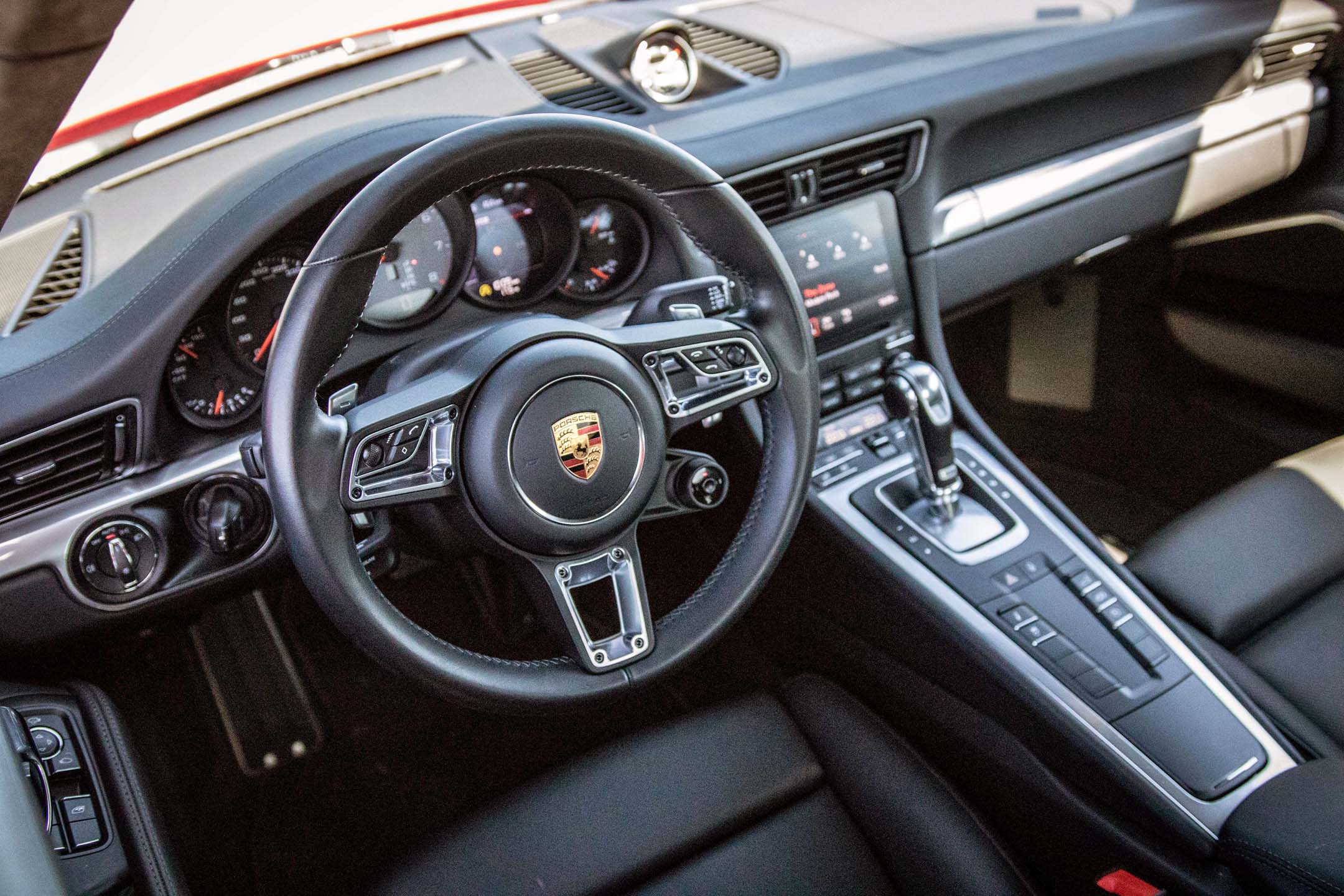
And certainly you can expect the 911 of some years hence to provide that same level of flexible autonomy (Porsche will, I’m sure, find a way to make you pay for it). This C4S, meanwhile, delivers on the promise made by the glorious 959 all those years ago: relentless, uncompromising, all-weather speed.
The new turbocharged flat-six lacks a little of the character of the previous, naturally aspirated engine, but sounds pretty good when the exhaust is in sport mode, and you can’t argue with the thrust. For Autobahn and efficiency reasons, modern Porsches have always had ridiculously long gearing (Impound my car? But I was only in second gear!), and the torque of a turbocharged car makes the C4S very flexible.
It’s also just a rocket. The new dial you get for selecting drive modes makes on-ramps a quick blast through the gears in Sport Plus, and then back to quiet cruising without attracting the attention of the RCMP. Even in normal mode, ferocious speed is there whenever you need a right-now pass. Simply flex your right foot and the seven-speed PDK double-clutch dumps gears and you lunge forward.
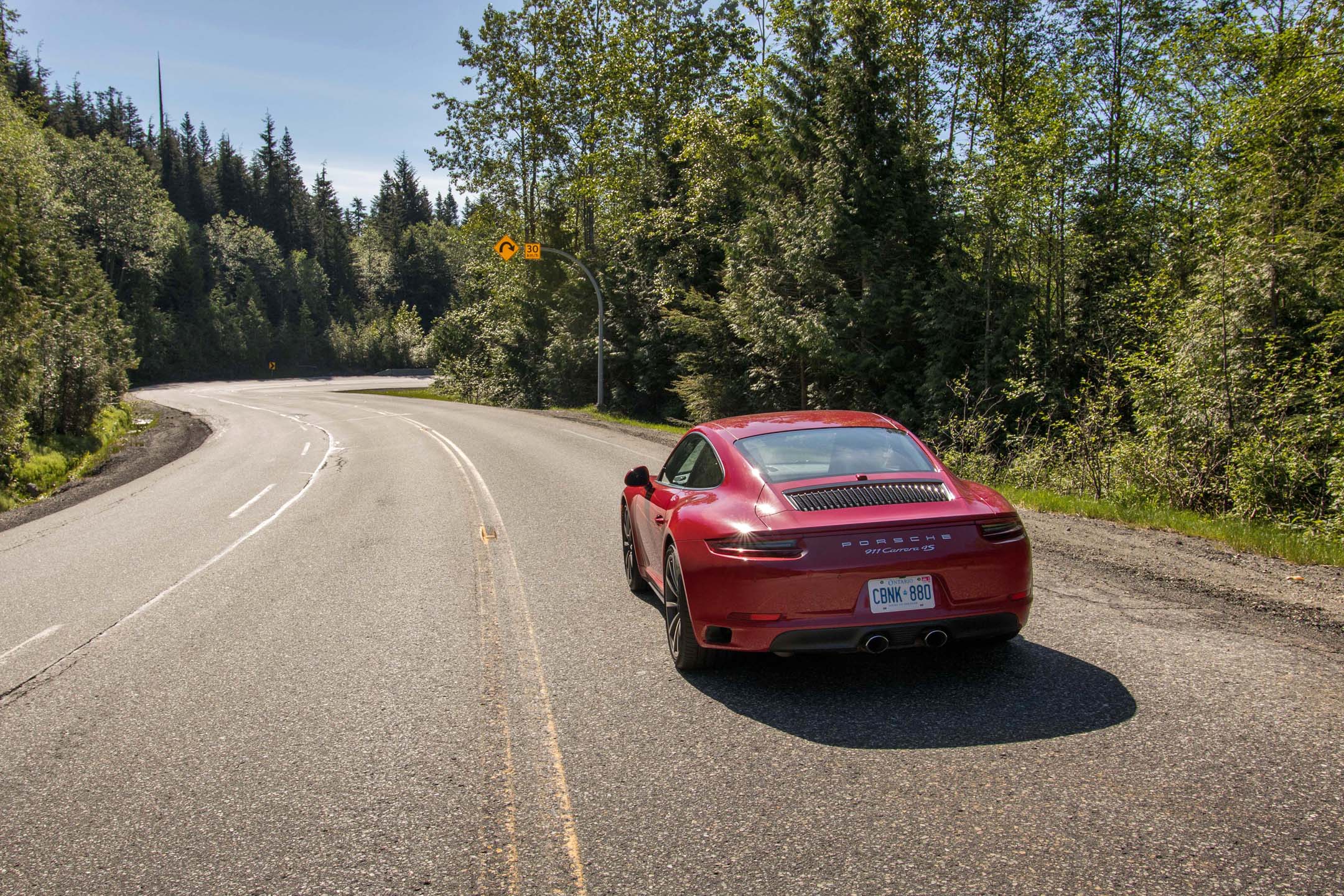
There are so many lines of carefully prepared code here massaging things, and yet the 911 is better than almost any other car at hiding some of its trickery from you. Perhaps it’s all those years of dealing with the dynamic problems of hanging an engine out behind the back axle, but Porsche’s engineers have managed to tame their car into a docility that doesn’t feel artificial.
Instead, the C4S is speed without the work. In a bright red car, with summertime speed enforcement at its peak, I’m not sure I really want that. But, on the other hand, it’s also an utterly competent cruiser, and the rear seats are easily big enough for both kids’ car seats. The only compromise with the 911 is whether or not you can afford the one you want. Oh, and the cupholders.
The RF, on the other hand, immediately asks you to compromise. The trunk is juuuust barely big enough for a weekend trip, cabin space is tight – roof up it’s a little claustrophobic, roof down it’s more blustery than the roadster – and, oh yeah, goofy cupholders.

You know what? Good. If Mazda managed to build a car that didn’t ask you to compromise in some way, be that on storage expectations or a place to put your four-thousand-calorie sugar-coffee drink, then it would be a Toyota Corolla. Which, by the way, has probably sold a further million copies since you started reading this.
Yes, the MX-5 asks, but it also answers. There is no need for a selectable driving mode anywhere else than in the driver’s brain. Want to go faster? Press harder and shift faster.
I’ve driven plenty of old cars that were more fun than the MX-5, and I’ve driven plenty of new cars that were faster. I don’t think I’ve yet to drive anything that did as good a job of blending the fast and the fun part in this joyous exclamation of an automobile. It’s just such a great balance of things. Possibly adding a little stiffness to the suspension would be necessary for those who are going to track their cars, but as it is, the roll lets you understand what’s happening, and trail-brake-tail-throttle-on-squeal-of-tires-whee!
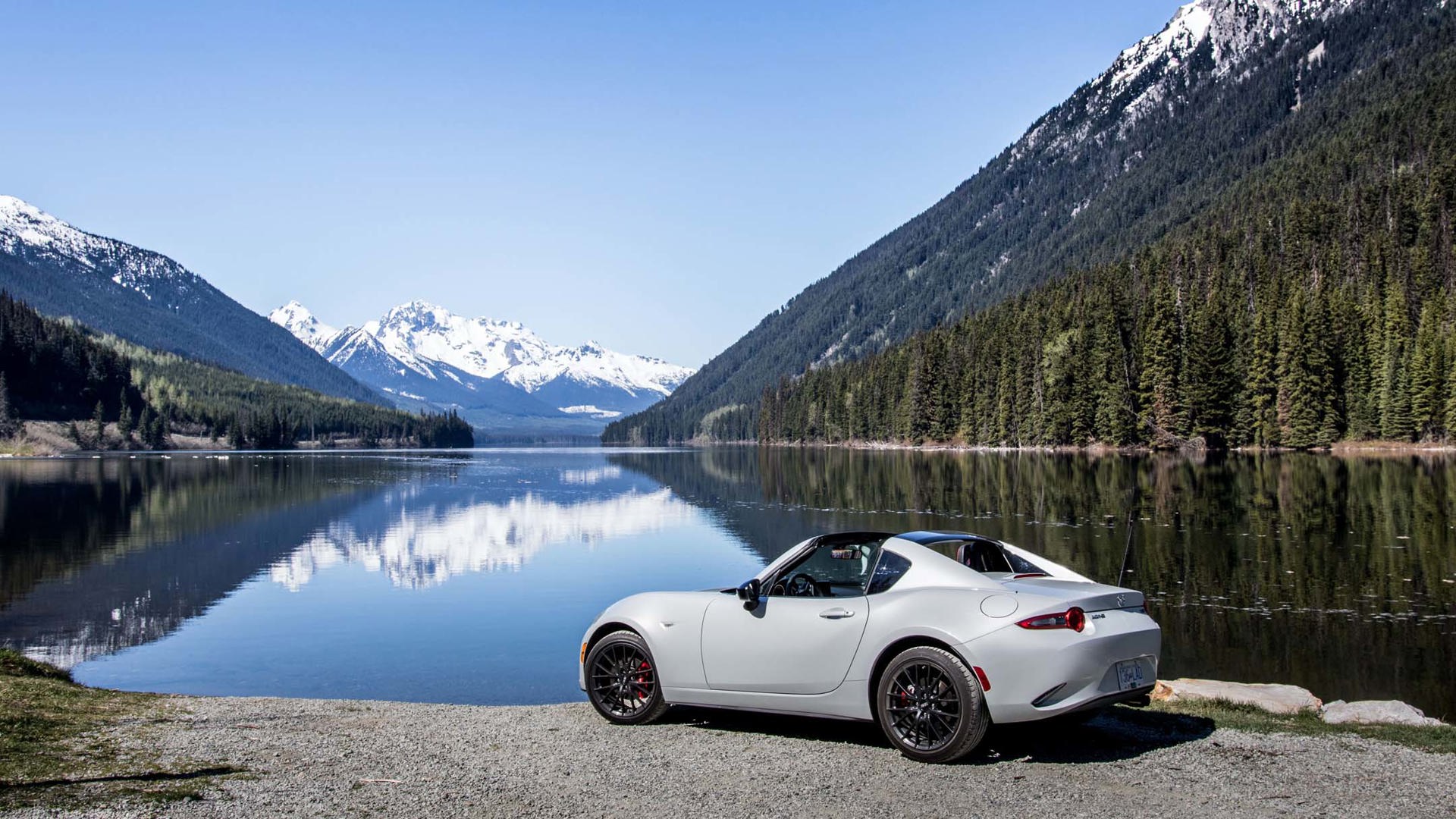
On a bright sunny day, unencumbered by passengers, I hurtled up the Duffy Lake Road, eventually catching up to a 911 Carrera S, maybe a couple of years old. For a little while we played cat and mouse, with the MX-5 playing the part of the mouse scampering around after the bemused 911’s cat. Absolutely he could have winked out of sight with his superior power and cornering, but the road is challenging and winding, and there is a limit to how fast you want to drive on public roads, no matter the conditions.
What I can be sure of is that I was having more fun. The MX-5 responds so well to getting things right with rev-matched downshifts and heel-and-toe work, and all the rest of the lost driving arts. Just as the 911 protects you with its invisible barriers of code, you know that some Japanese engineer spend three years figuring out how to get the fourth-to-third shift to make the shifter go snick and the car surge willingly out of the corner.
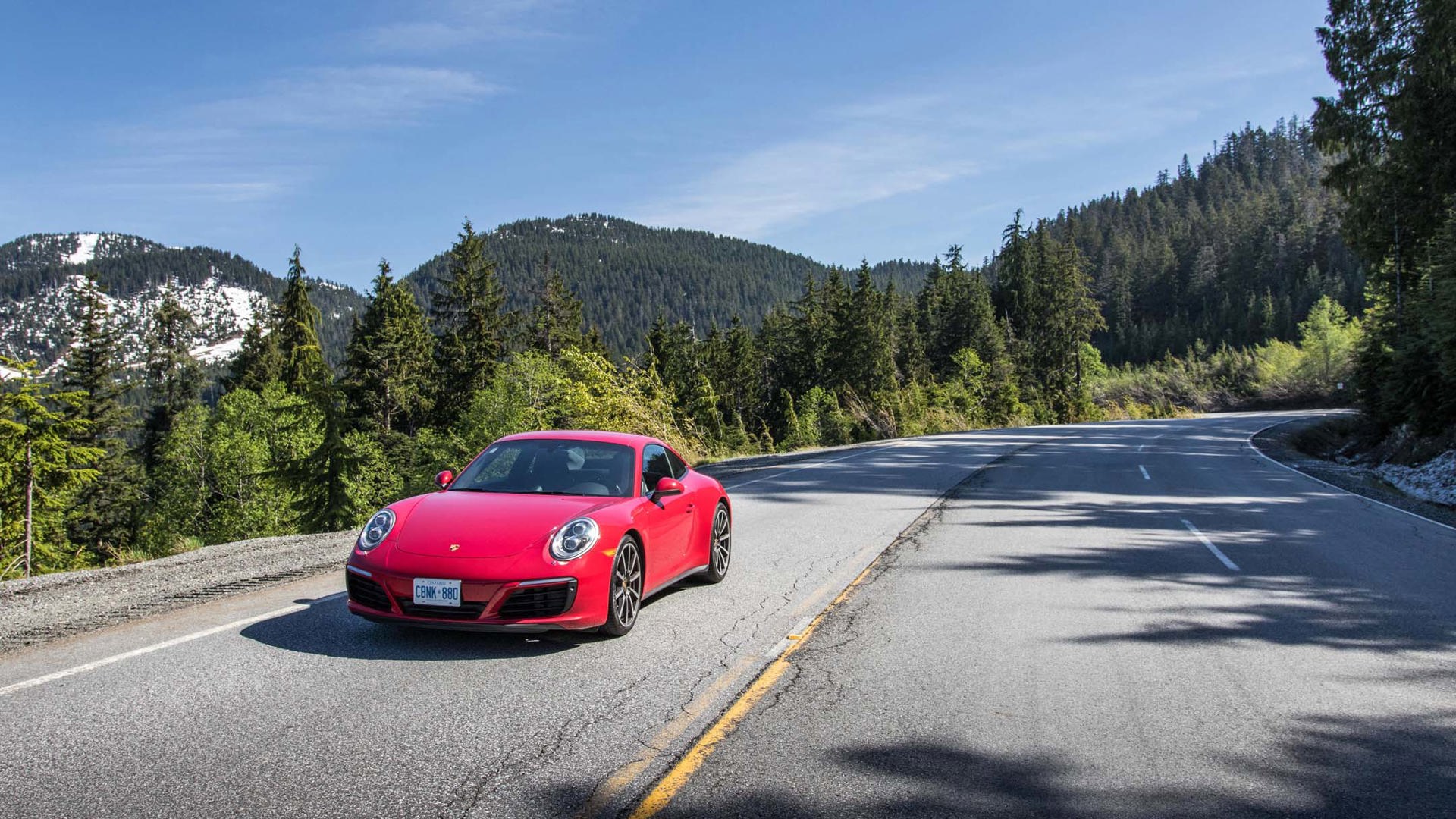
At a million units moved, the Porsche 911 represents hope for the future of the sports car in the following ways: It shows that technology can enhance performance. It shows that it is possible to build a ravenously fast sporting car that becomes docile for everyday driving at the flick of a button. It will doubtless incorporate hybrid technology and electrification at some point in the future, and doubtless the purists will all complain, and doubtless the new model will be faster and more efficient. It shows that we need not be afraid of the future of driving, no matter if our dream car is a V8 Camaro or a Ferrari.
But the MX-5 is what really holds hope for me. It shows that by staying true to an original vision – small, lightweight, single-of-purpose – a company can find success.
With the 911, Porsche offers you all the choice that money can buy. Mazda’s offering is more open-hearted: here’s the one thing we do, and we do it well. Millions agree. They’re not wrong.
